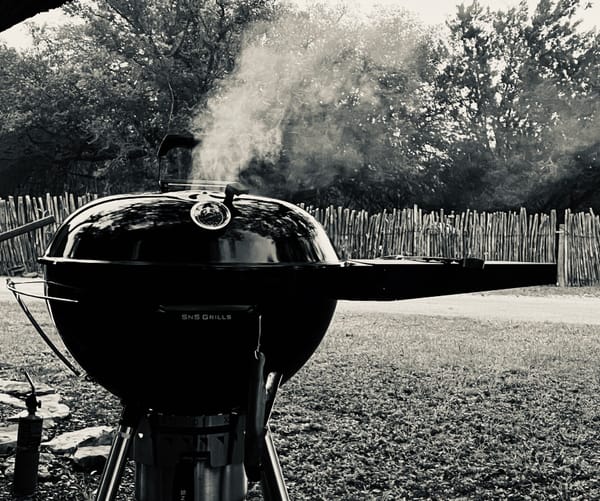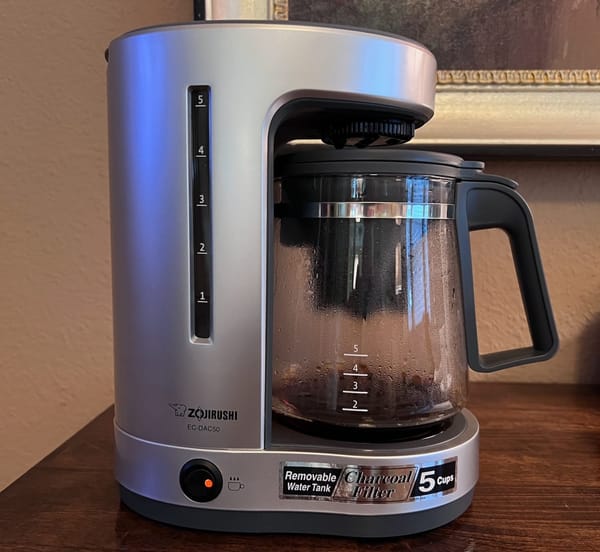Mill Scale 94 Backyard Offset Smoker Review
The Mill Scale 94 offset smoker does the simple things right so you can produce high quality Central Texas barbecue.

If I had a dollar every time I heard someone say “this is the last bbq pit I will every buy”, I could quit my job and live on a large ranch in the middle of nowhere. On this ranch, there would be naturally flowing rivers stocked with rainbow trout, elk, and bison roaming through pastures, and a simple wood burning barbecue smoker to create succulent meats for friends and family.
This barbecue pit will need to be handcrafted by a local tradesman, so I can support my local economy. Thick metal along with a timeless, simple design is a must along with no requirement for electricity. The smoker doesn’t need to be perfect, but I do want to gleam with pride every time I walk up to it.
For me, that is the Mill Scale 94 offset smoker, which is the pinnacle of backyard smokers in my opinion. Did I mention no extension cords required?
What is a Mill Scale 94 Backyard Offset Smoker?
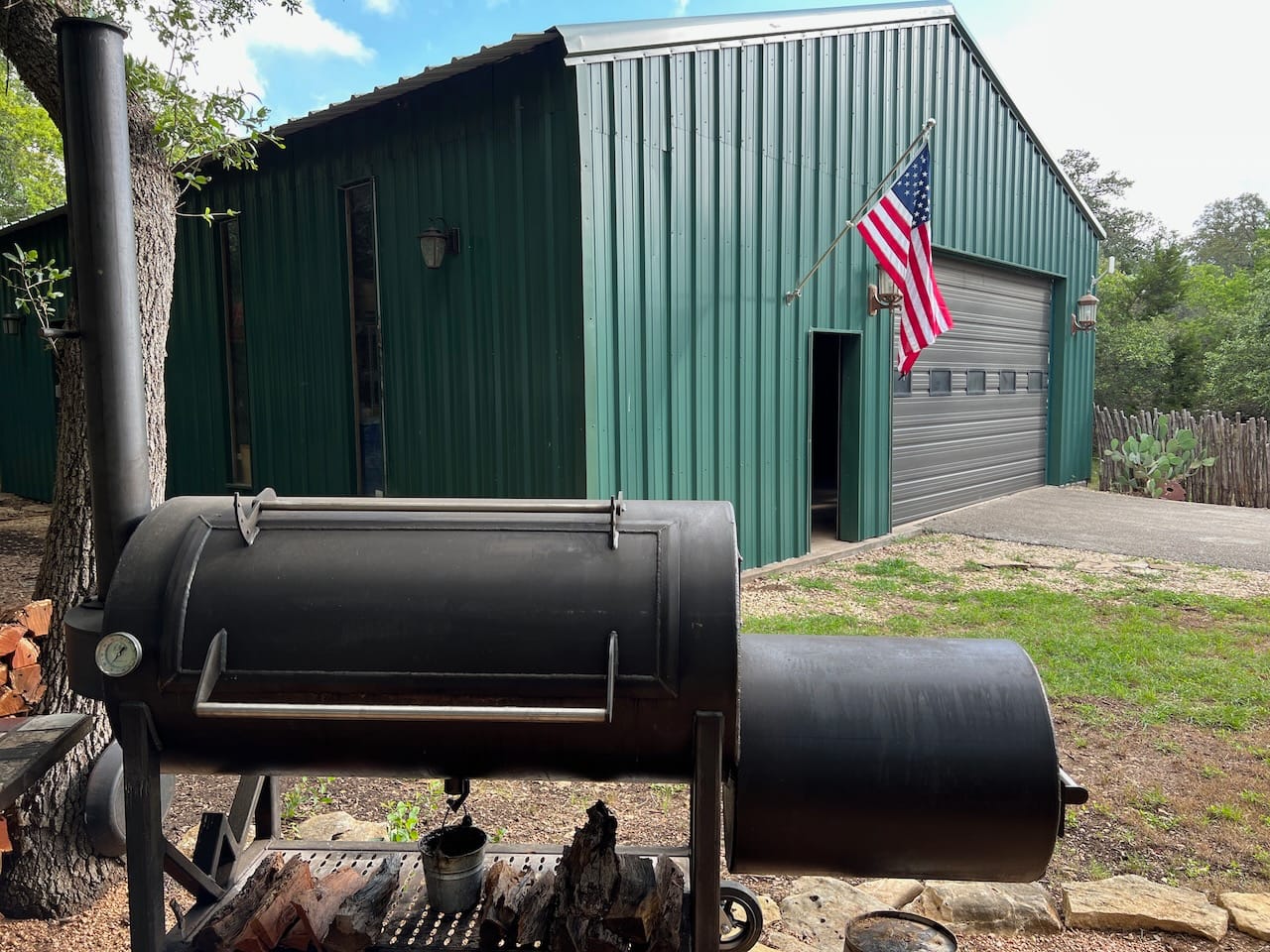
The Mill Scale 94 is a heavy duty, wood burning offset smoker made by Mill Scale Metal Works out of Lockhart, Tx. The high-end offset smoker is a traditional style stick burning backyard cooker featuring a 94 gallon main cook chamber.
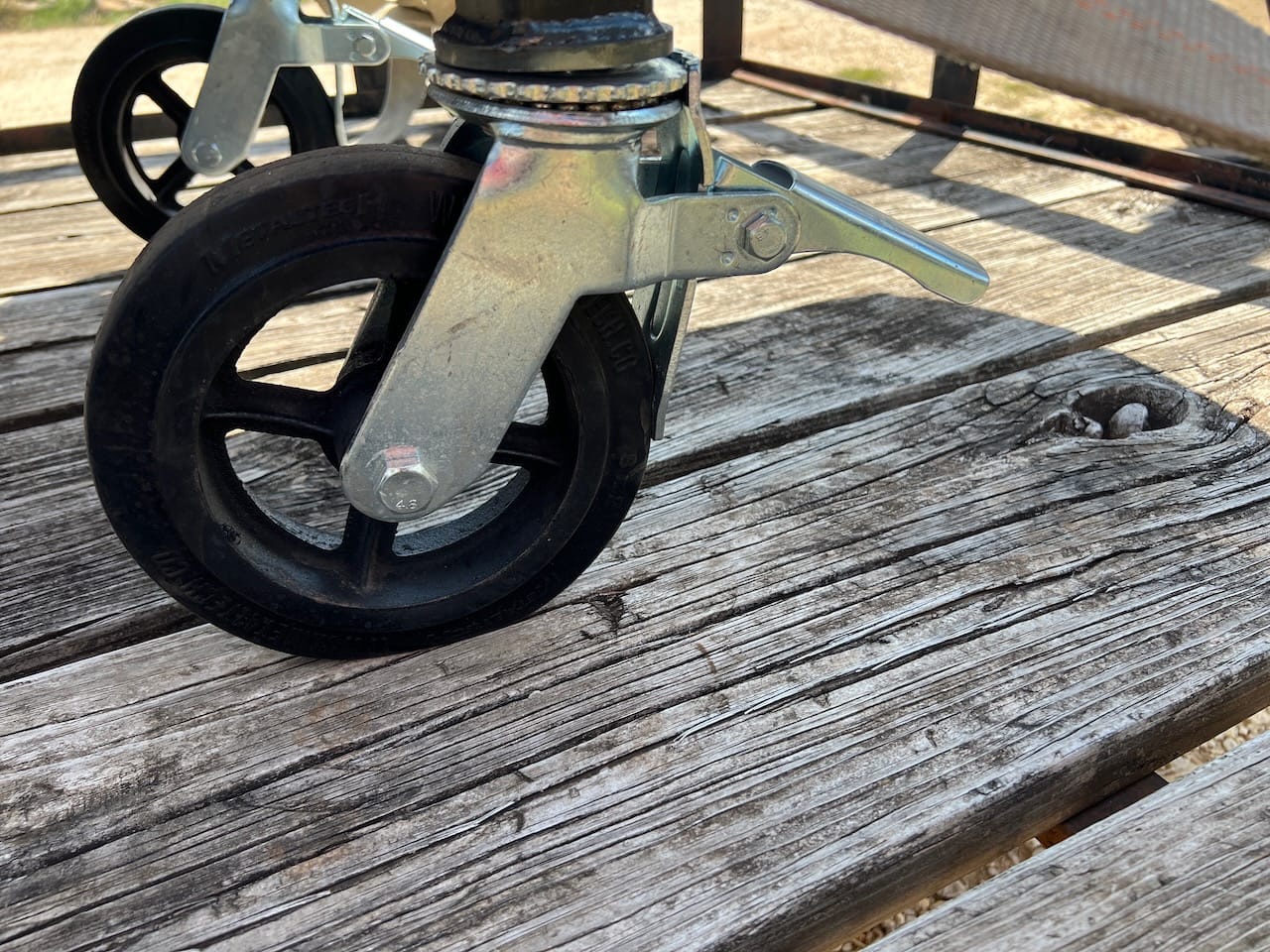
With an approximate weight of 775 LBS, the standard 8” locking casters make easy work of pushing the smoker around on hard surfaces. Every caster comes standard with a built-in lock giving you complete control over placement on most surfaces.
Mill Scale 94 Offset Smoker Specs
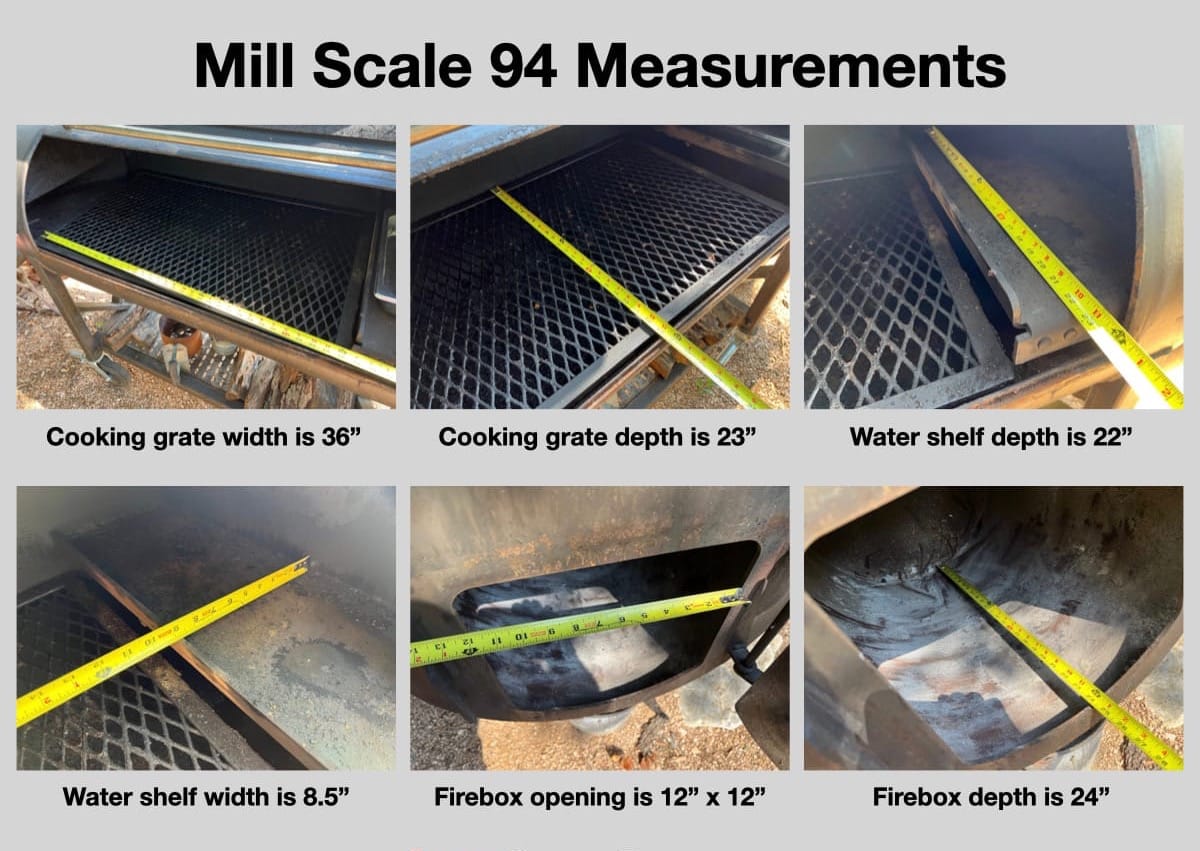
The cook chamber is 24” in diameter, while the firebox is slightly smaller, coming in at 20” in diameter. The cooking grate measure 36” wide by 23” deep. The water shelf measures 8.5” wide by 22” deep. Both the cook chamber and firebox are made of 1/4” wall thickness steel.
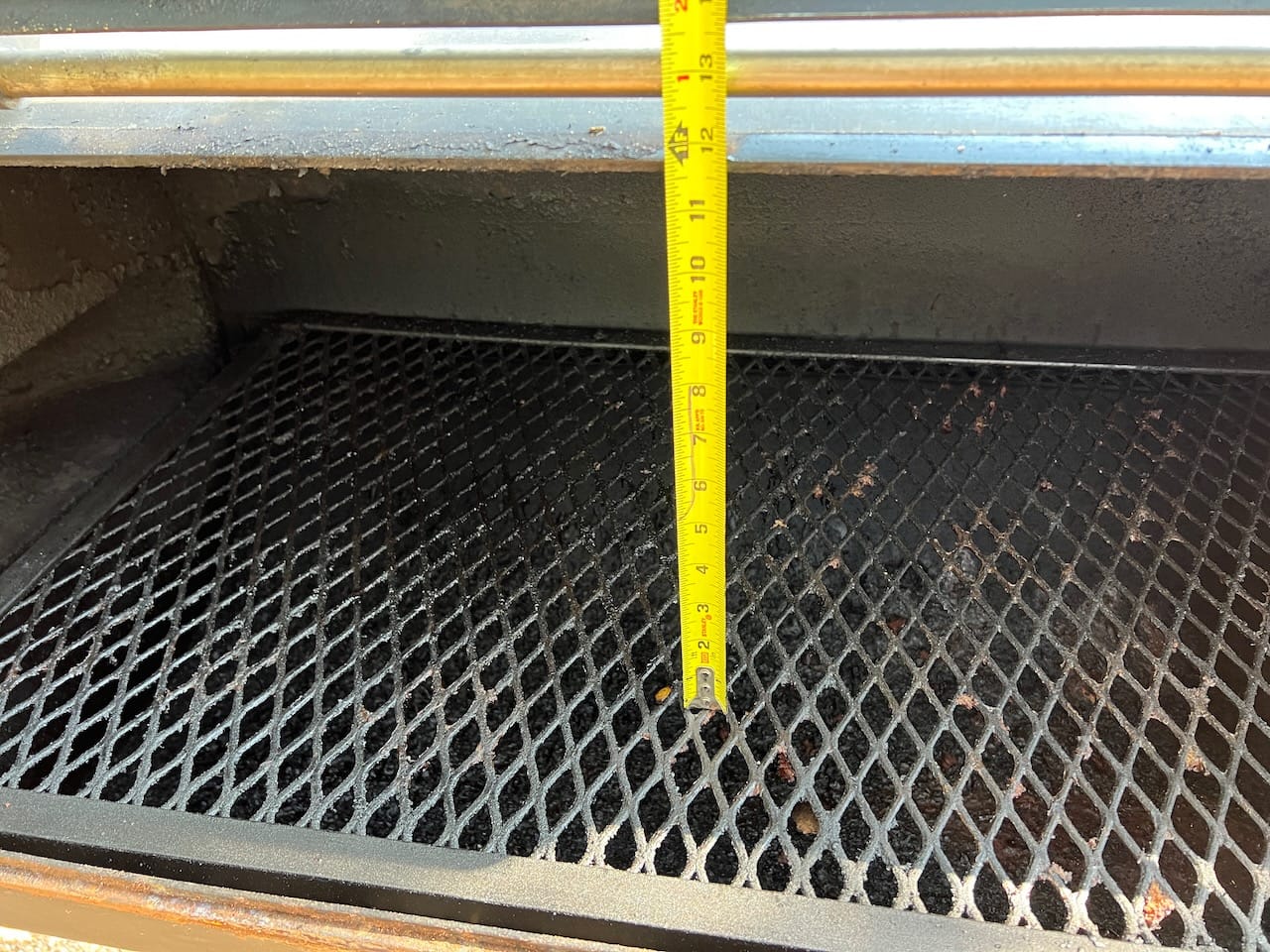
The height of the cooking chamber on the Mill Scale 94 backyard smoker is 11.5" from the main cooking grate to the top of the chamber opening. This allows you plenty of room to cook full size birds like turkeys or insert a removable second tier rack that sits on the main grate. We have even installed the Bull Rack system with removable trays to cook beef jerky as you will see later in this article.
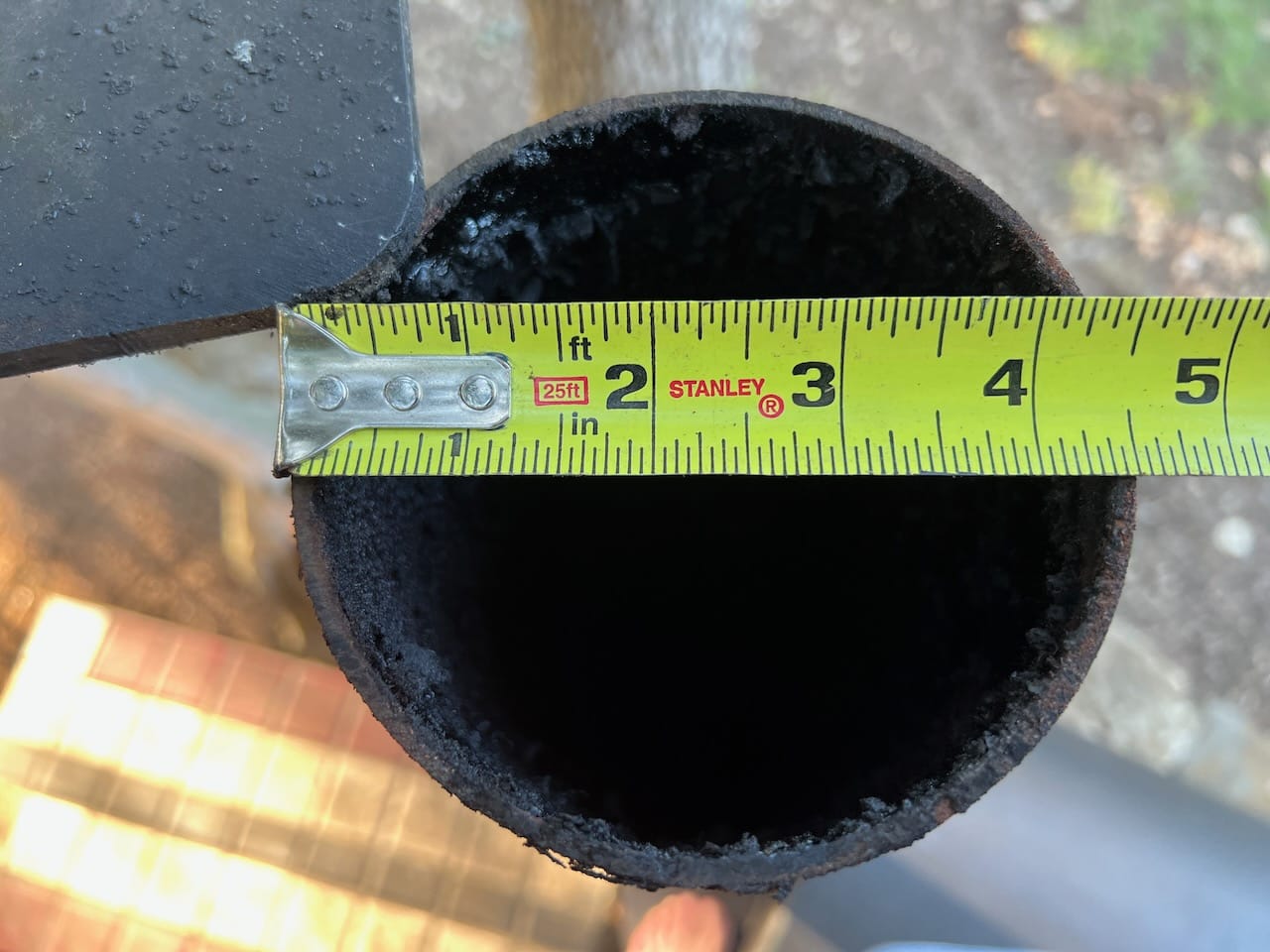
The quick assembly, bolt-on smoke stack is 4” inside diameter with an overall length of 48.5” by itself. Outside dimensions of the smoke stack are 4.5”. When attached to the smoker, the smoke stack is 88” from the ground to the top of the smoke stack.
Mill Scale 94 Specs
- Overall length: 88”
- Overall width: 28”
- Overall Height: 88” (From ground to top of smokestack)
- Overall Height of Cook Chamber: 48” (with smokestack removed)
- Weight: 775 LBS
Included with the Mill Scale 94
- 1 Cooking Grate (Fits 3–4 Briskets)
- 1 Cook Chamber Door
- 1 Tel-Tru Thermometer
- 1 Grease Drain
- 1 Grease Bucket
- Lower Shelf Installed on Skids
Mill Scale 94 Offset Smoker Options
While some builders of offset smokers allow for any option you choose, Mill Scale has kept it simple with their backyard smoker. On their website they offer some useful options like upper grates that will allow you to cook more food at once or high temp paint that will change the look of your smoker. Let’s go over a few of these features.
Oiled Raw Steel or High Temp Black Paint
The Mill Scale 94 has a few options you can add on when ordering. First, you can select the oil raw steel finish or high temp black paint. I did not go with the high temp paint because we all know it will eventually come off over time. I selected the raw steel, which I maintain by wiping tallow on the metal during cooks to keep it from rusting.
Upper Cooking Grate
I have removed just about every upper cooking grate on offset smokers I have owned in the past, so I didn’t choose this option. I also wanted to keep the cook chamber open and free flowing so the smoke can roll through as it exits the stack. Many times, upper shelfs limit my ability to see what’s on the back of the pit, which makes it hard to turn meats.
Firebox Plancha with Lid
The firebox plancha is a flat griddle plate welded into the top of the firebox. If I had opted for anything, it would have been this feature, but it was a little pricey to upgrade. Plus, I wasn’t certain how hot the plancha cooked at, being directly over the fire. The Mill Scale 94 comes standard with a flat metal shelf on the inside for a water pan that can also serve as a griddle.
Cover
I did not opt for the cover because, quite frankly, I can’t stand removing and installing barbecue covers. Instead, I chose to always apply tallow to the metal of the cooker to preserve the metal.
Mill Scale has photos of all these options on their website.
What I Wanted in a New Offset Smoker
First on my list was classic simplicity. In today's world, “new” seems to be all the rage. Every day I wake up someone is inventing a new knife, cooking pan, or barbecue pit for that matter. The older you get in life, the more you crave simple. The basic offset smoker was created years ago by oil pipeline workers, and not much has changed along the way.
Offset Smoker Wish List
- 24” Round Cook Chamber
- Round Firebox With No Vent on the Door
- Large smoke stack with collector
- A lip on the edge of the firebox so I can pull the fire toward the door without coals falling on the ground
- Excellent craftsmanship
- Pit builders well versed with convection and draw
- Did I mention simple?
- Single temperature probe not in the lid. I don’t need four temp probes. More temperature probes will only make me fiddle and stress more.
- Single lid
- A smoker made in Texas
24” Round Cook Chamber
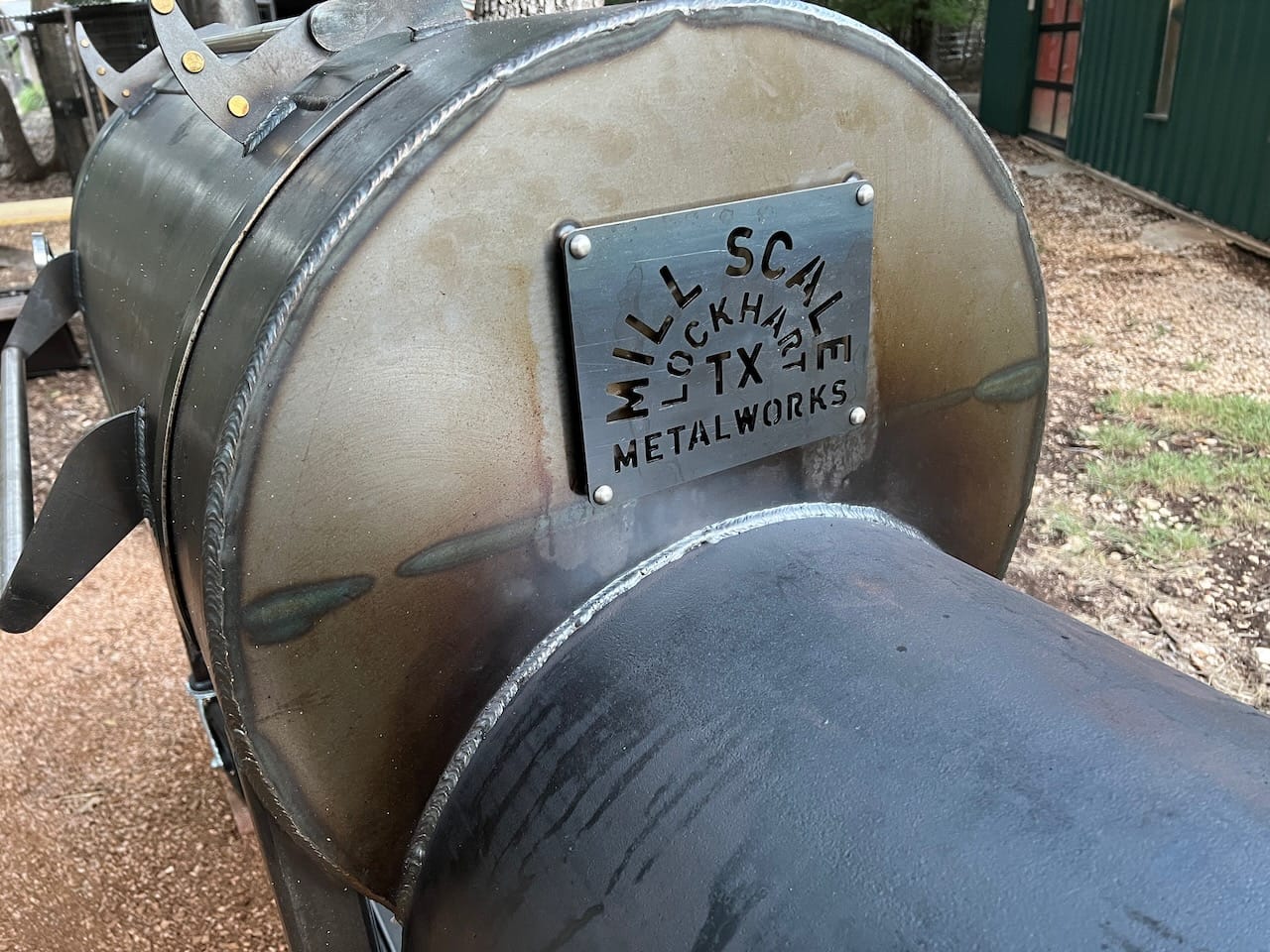
My old offset smoker has a 20” round cooker chamber, and it always felt a little cramped. While I had originally considered going with a much larger offset smoker, I finally settled on the 24” size chamber, and I’m glad I did. The Mill Scale 94 is much larger in person than it appears online. It makes my old smoker look small by comparison.
Large Smoke Stack with Collector
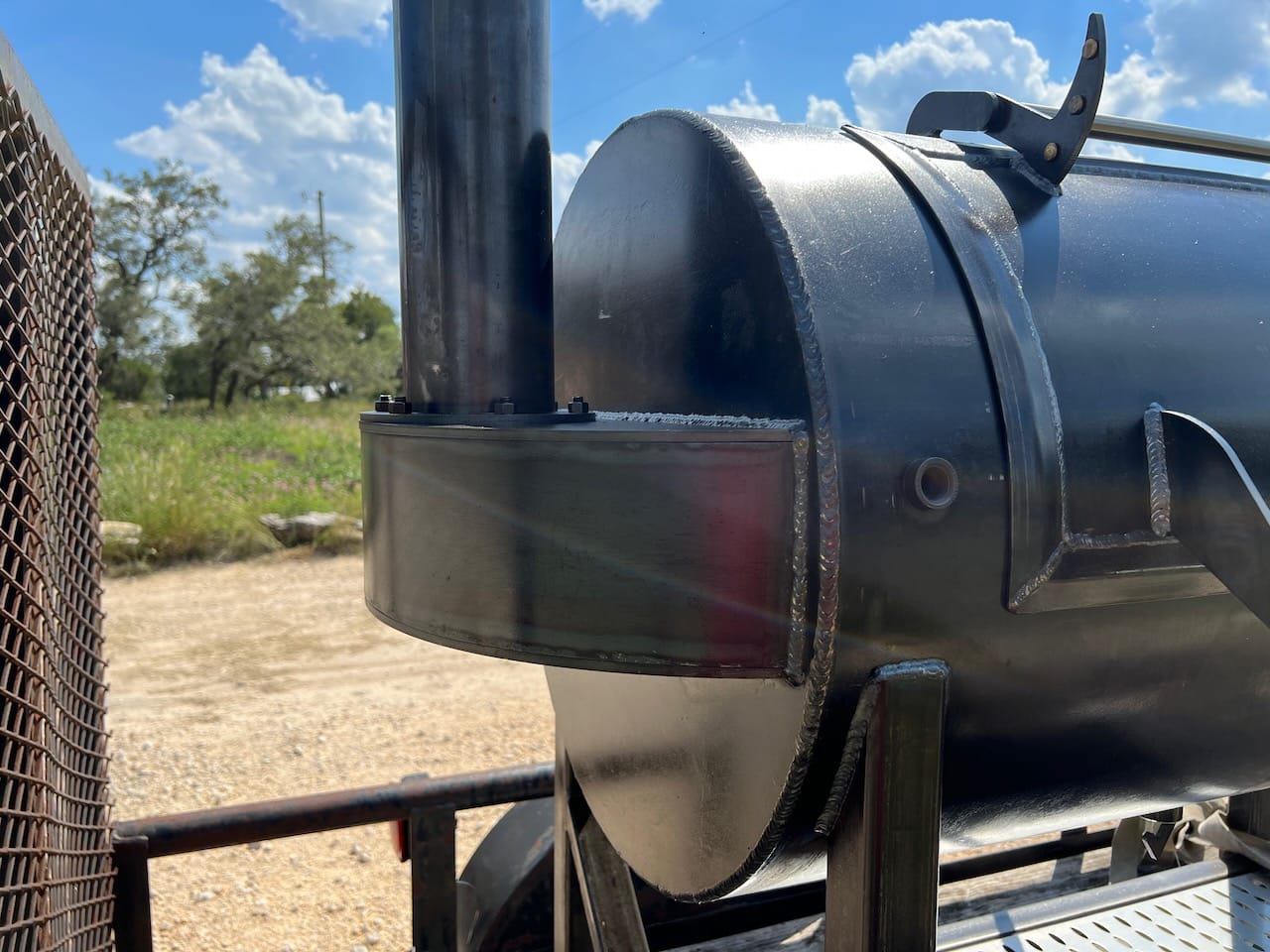
The large collector on the Mill Scale 94 allows you to move some serious air if you choose to. This thing will churn away like a locomotive if you’re doing more hot and fast cooks like burgers or chicken.
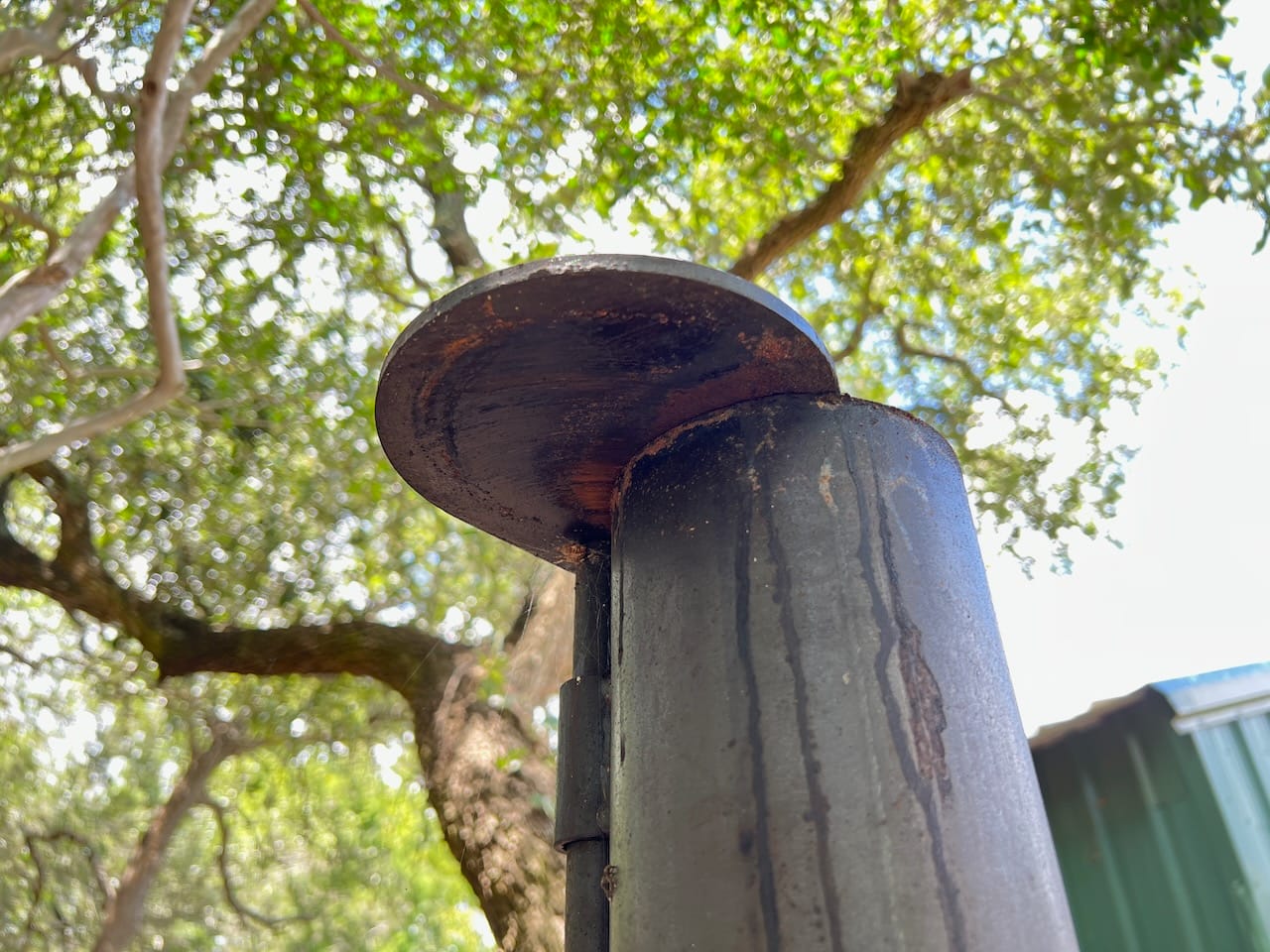
If you’re cooking more low and slow, you can tame down the airflow in the cook chamber with the damper on top of the stack. This allows for a more gentle rolling air across your meat, so you don’t dry out what you’re smoking.
Quality Craftsmanship
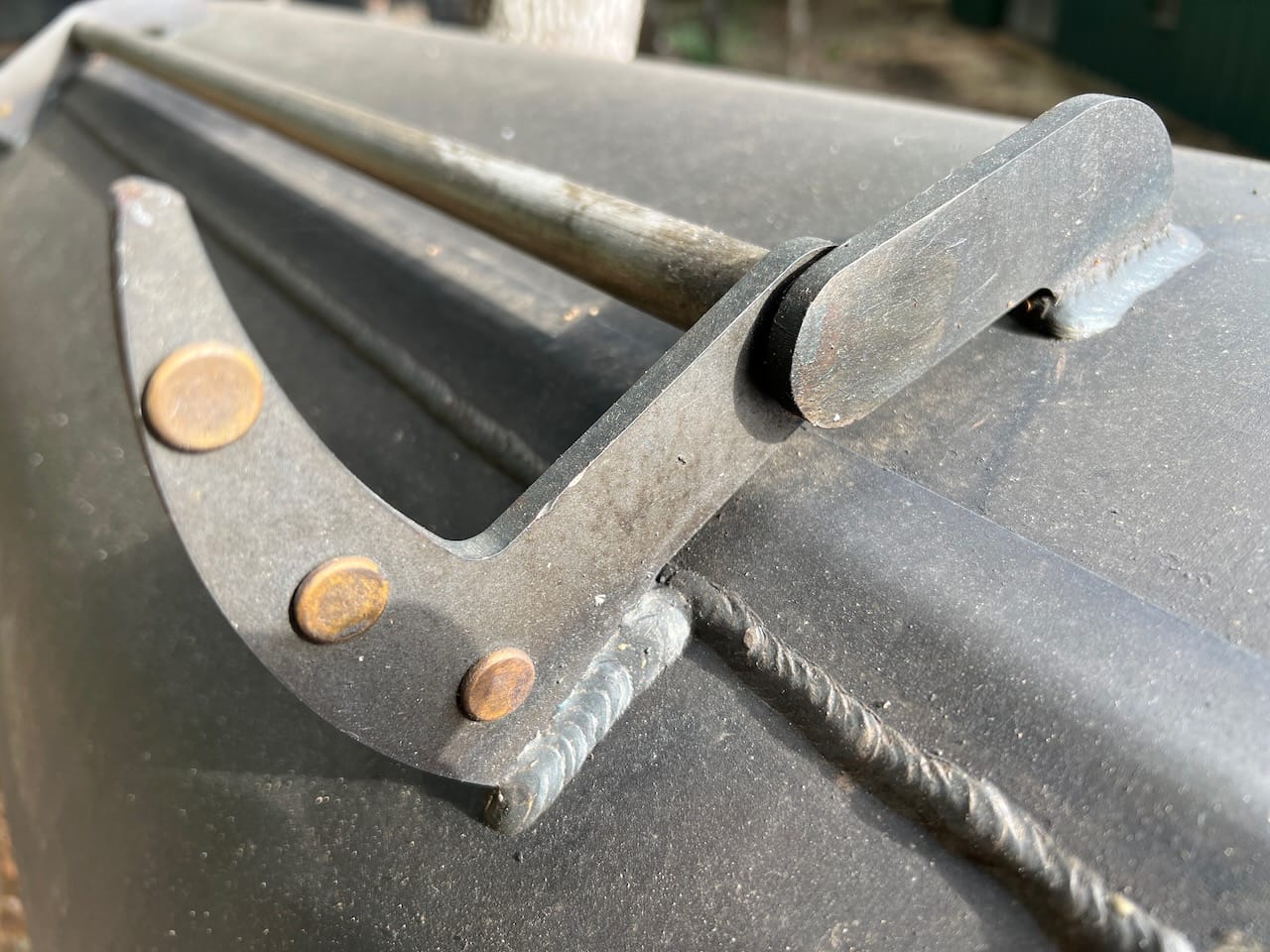
The Mill Scale 94 has unique design elements like the hinges on the cook chamber door with brass rivets. They provide a unique aesthetic and also act as door stops when the cook chamber door is opened. All the welds on the smoker are top-notch, and the cook chamber door does have a little weight to it. Some may be able to open it with one hand, while others will have to use two.
Water Shelf Inside Smoker
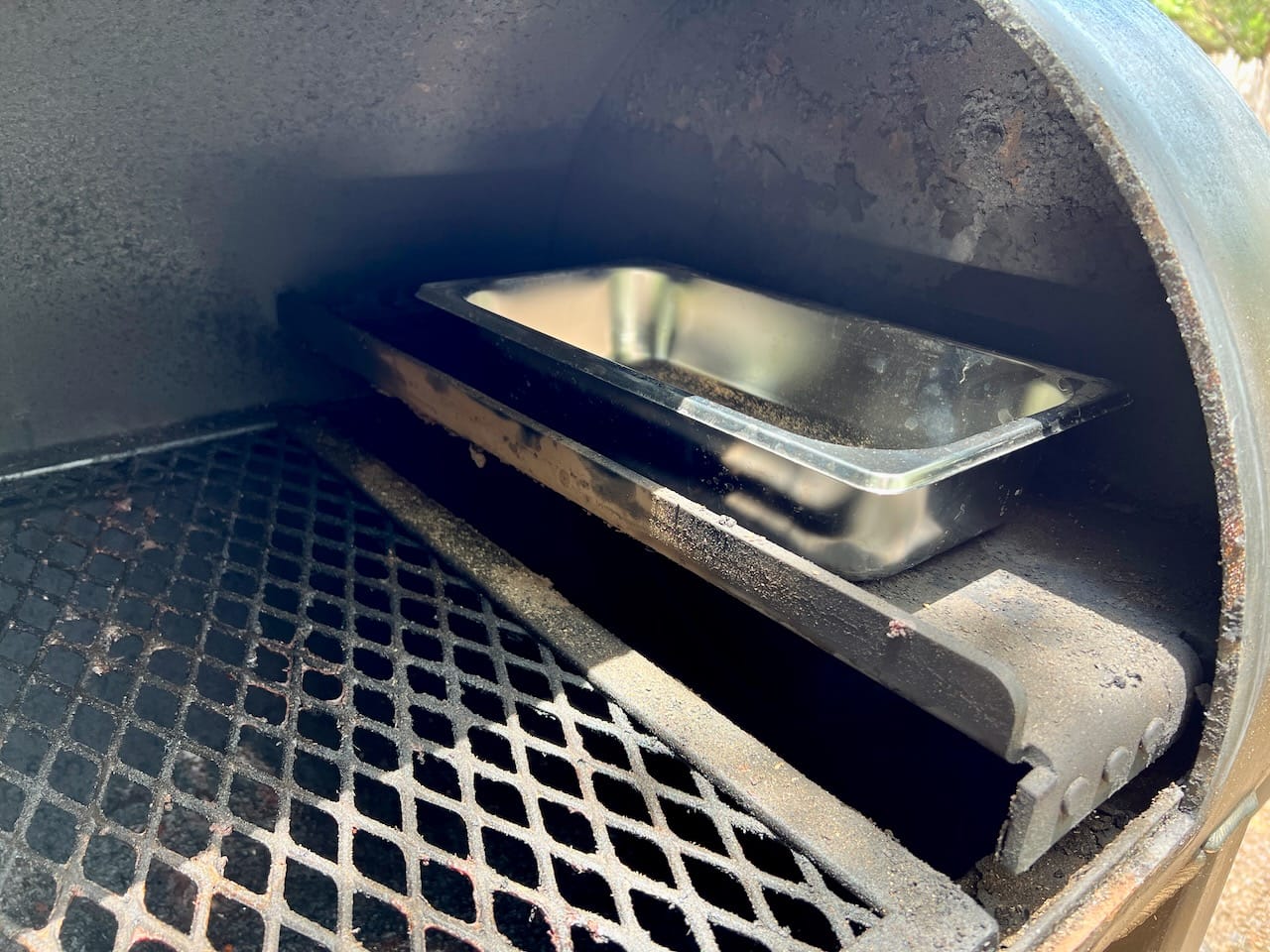
The inside of the Mill Scale 94 smoker has a water shelf near the fire box. This serves as a heat deflector and a place to put a small water pan, so you can add moisture to your cook. The flat griddle surface can also be used to sear burgers or steaks, as it gets very hot being close to the fire.
Single Temperature Probe by Collector
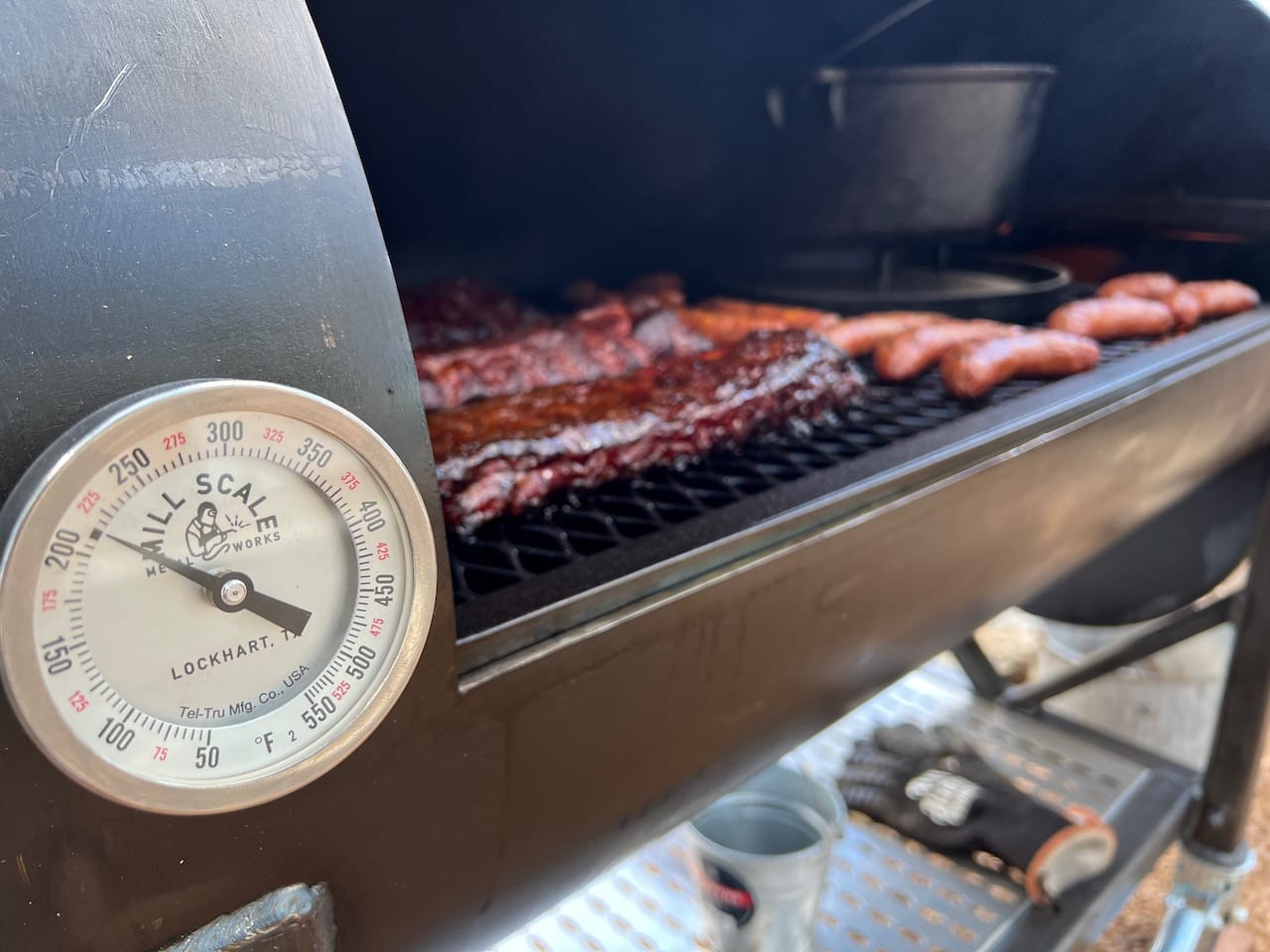
On my offset smoker, I only wanted one temperature gauge, and that’s what comes standard on the Mill Scale 94 offset smoker. The reason is, multiple temperature gauges have a tendency to cause unnecessary fiddling with the fire and vents. This adds unneeded stress and anxiety to a cook, which is probably why I love the simplicity of cooking on my Pit Barrel Cooker.
I prefer the location of the temperature gauge that Mill Scale chose. The gauge is mounted at grate level on the end of the grill by the smoke collector and stack. It is mounted on the body of the smoke chamber, not the lid, which is what I prefer. Temperature gauges mounted in the cooker door can lose their calibration if the lid is dropped or slammed.
No Probe Ports
If there is one thing the barbecue community is good at doing, it’s selling accessories. We enthusiasts are constantly looking for the next best injector, seasoning, thermometer, knife, spatula, charcoal or pellet, fan, you name it. It doesn’t take much to get a barbecue nut to make a purchase, especially if they feel it is going to give them an edge.
When I started barbecuing on my big green egg, I had every thermometer offered by Thermoworks. I have spent hundreds of dollars on thermometers. As time went on, I started to use thermometers less and less because they felt unnatural. I do use an instant read to check temps and probe for doneness, but I no longer use a leave in thermometer. When I barbecue today, I render out meats based on touch and sight.
What I Did Not Want in an Offset Smoker
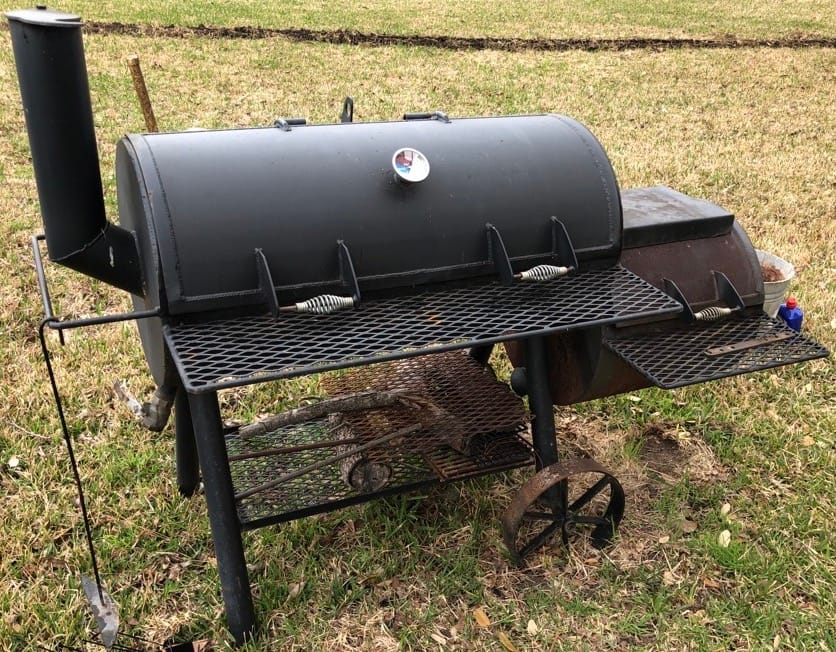
My previous offset smoker was made of thick metal, but it left a lot to be desired when it came to cooking chamber size and usability. The smoke stack on the unit is so low that the smoke would never get up and out of the way. The front shelf was unusable because the two handles would come down on anything you had sitting there.
For pure simplicity, here are some features I did not want on my new offset smoker:
- latches on doors (smoker is not on a trailer)
- ashtray or fire grate (gets in the way when cooking)
- cowboy firebox (never used and door leaks smoke and heat)
- reverse flow (not central Texas barbecue)
- counterweights on the cook door (don’t like the look)
- gas assist in fire box (something else to go out)
- port for fan assist
- pull out grates (juices leak all over the ground)
- vents on firebox door
Mill Scale 94 Offset Smoker Firebox
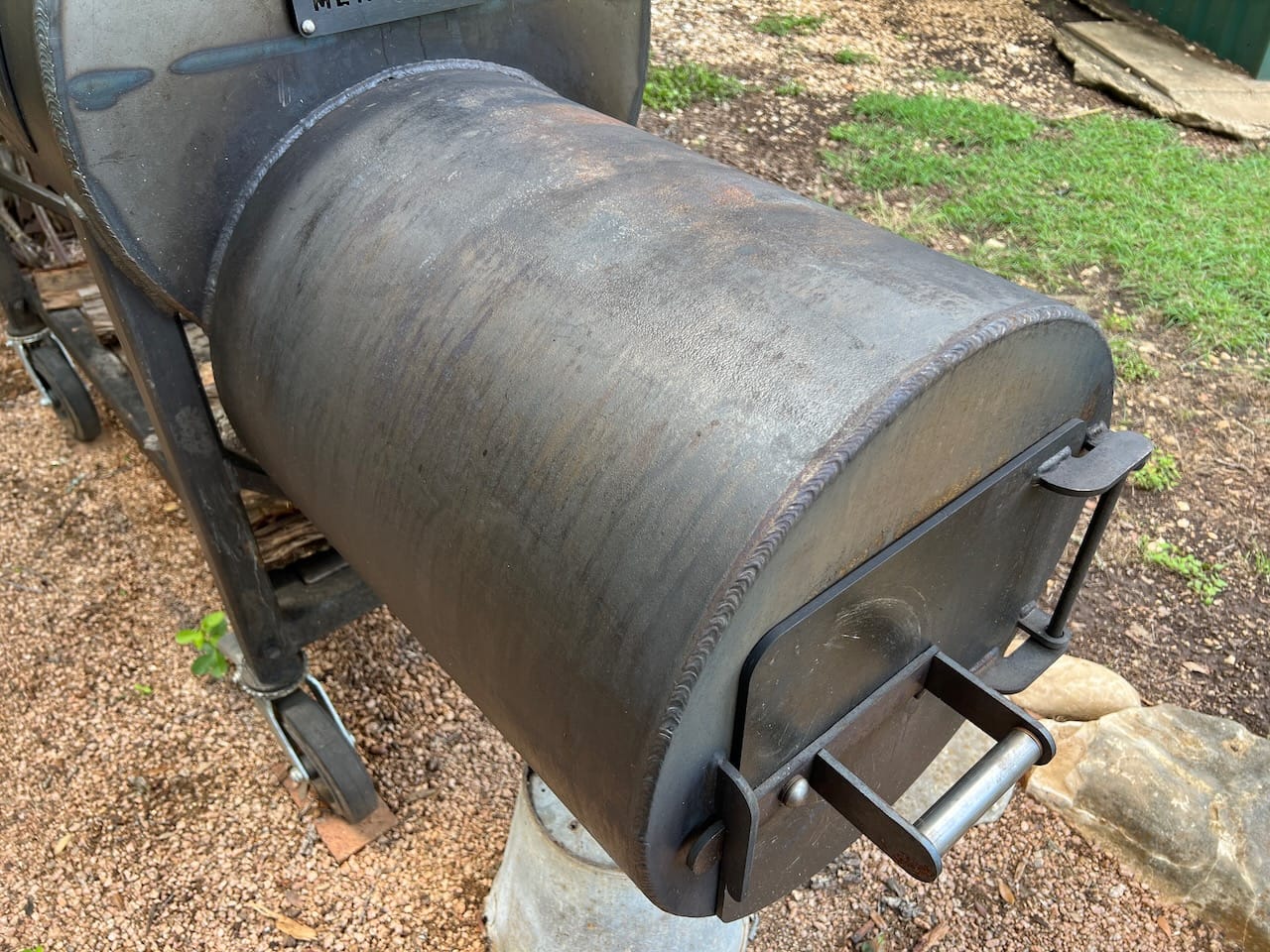
The firebox is the heart of any smoker, and I felt it deserved a dedicated section for discussion in this article. The firebox on the Mill Scale 94 is 20” in diameter and 24” in length. It can easily handle full-size splits when cooking due to the depth. The firebox is much larger in person than it appears in photos online.
Round Firebox With No Vents on the Door
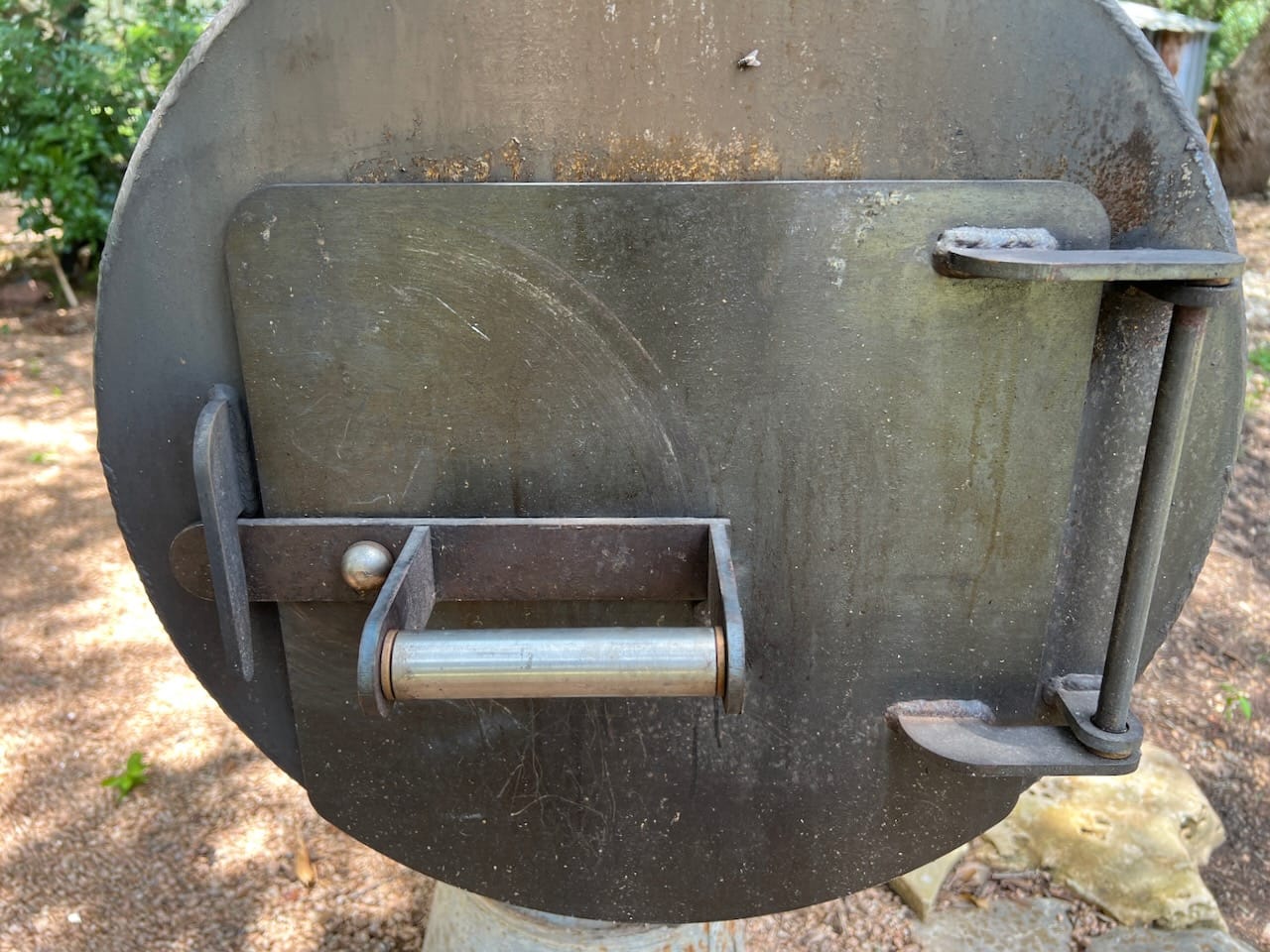
Since fire dances and moves in mysterious ways, I wanted the firebox on my smoker to be the traditional round style like you find in the top barbecue joints in Texas. Square seems to be all the rage, but round just made more sense to me. A round bottom firebox also makes it much easier to clean out the ashes with a standard spade shovel.
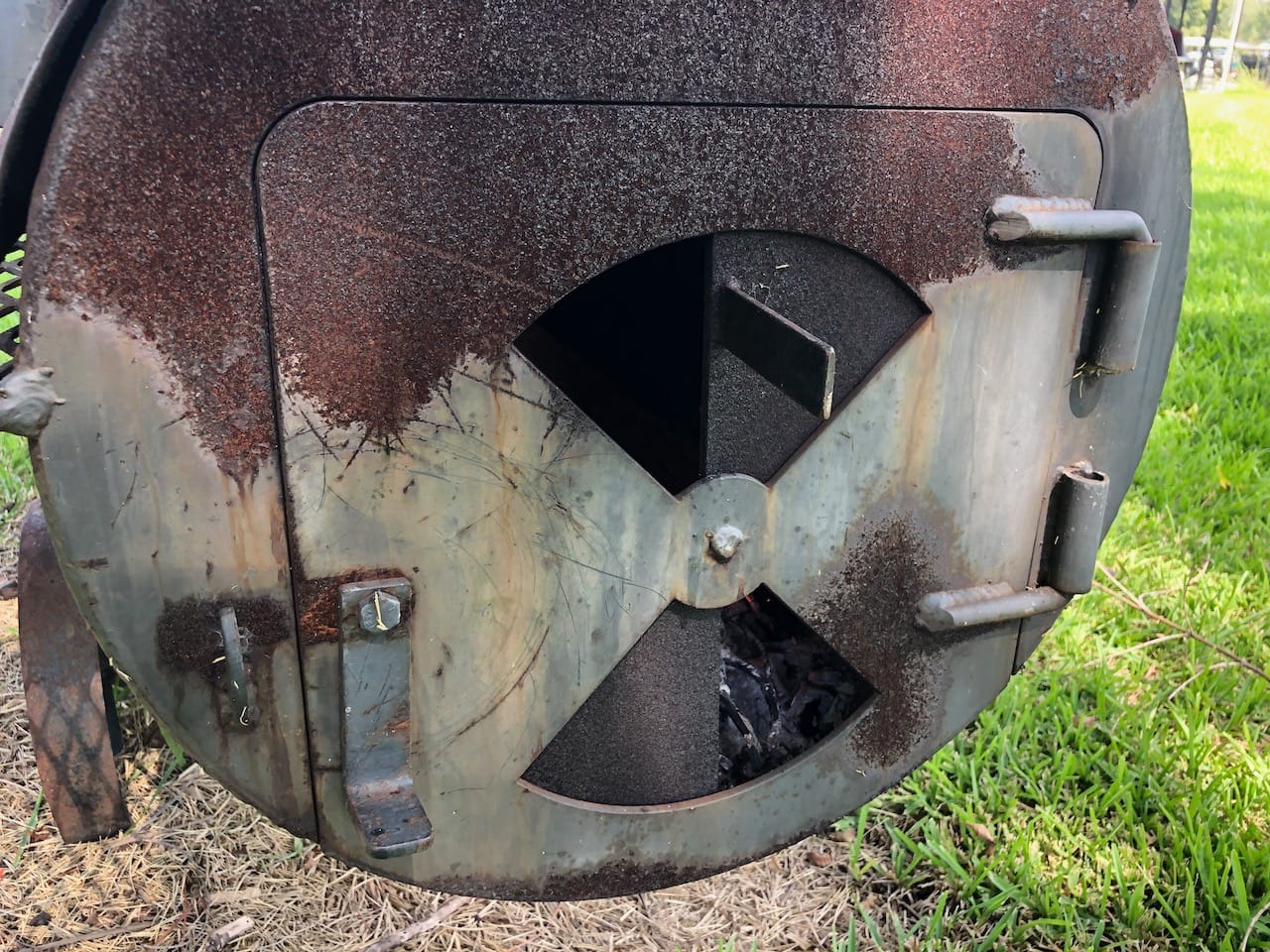
The firebox door on the Mill Scale 94 is a flat, simple design with no damper, and it lays flat against the outside when closed. Our older offset smoker has the vent built into the door, and it constantly seizes up during a cook.
The door is also recessed into the firebox, which causes it to seize up as well as the metal expands and contracts during cooks. Some YouTubers reviewing the Franklin Smoker had mentioned the same thing with the door sticking during a cook.
Insulated Firebox Did Not Make Sense
After reading and watching videos online, the insulated firebox on a backyard smoker started to make less sense for me. For starters, I don’t live in a cold climate. I have lived in Texas my whole life, and we are familiar with cooking in extreme heat, not freezing cold temps.
Second, my goal with smoking meats with real wood on an offset smoker is to always have a flame burning. The continual combustion of real wood is where the flavor, texture, and color comes from, and it can’t be matched by anything else. One of the negatives you will see people talk about is a fully insulated firebox has less convection and uses less wood.
When you have a firebox that is too efficient, there will be many times when you don’t add another stick of wood because the temperatures are being maintained with a coal bed. When this happens, you are essentially smoking your meat in a charcoal oven, which can be accomplished on any Kamado or drum smoker.
If you are producing hundreds of pounds of barbecue daily for a restaurant on a much larger offset smoker, an insulated firebox might make more sense. Larger smokers are more forgiving, and using less wood can have a significant impact on your bottom line.
Like I mentioned before, my goal was to keep it simple. I feel a basic heavy-duty round firebox with a single door and no additional vents accomplishes this better than anything I have seen. I wanted a natural burning fire that needs wood. My objective is the best final product I can produce, not the easiest or most convenient process like when using my pellet grill, Kamado, or barrel smoker.
Starting a Fire in the Mill Scale 94 Offset Smoker
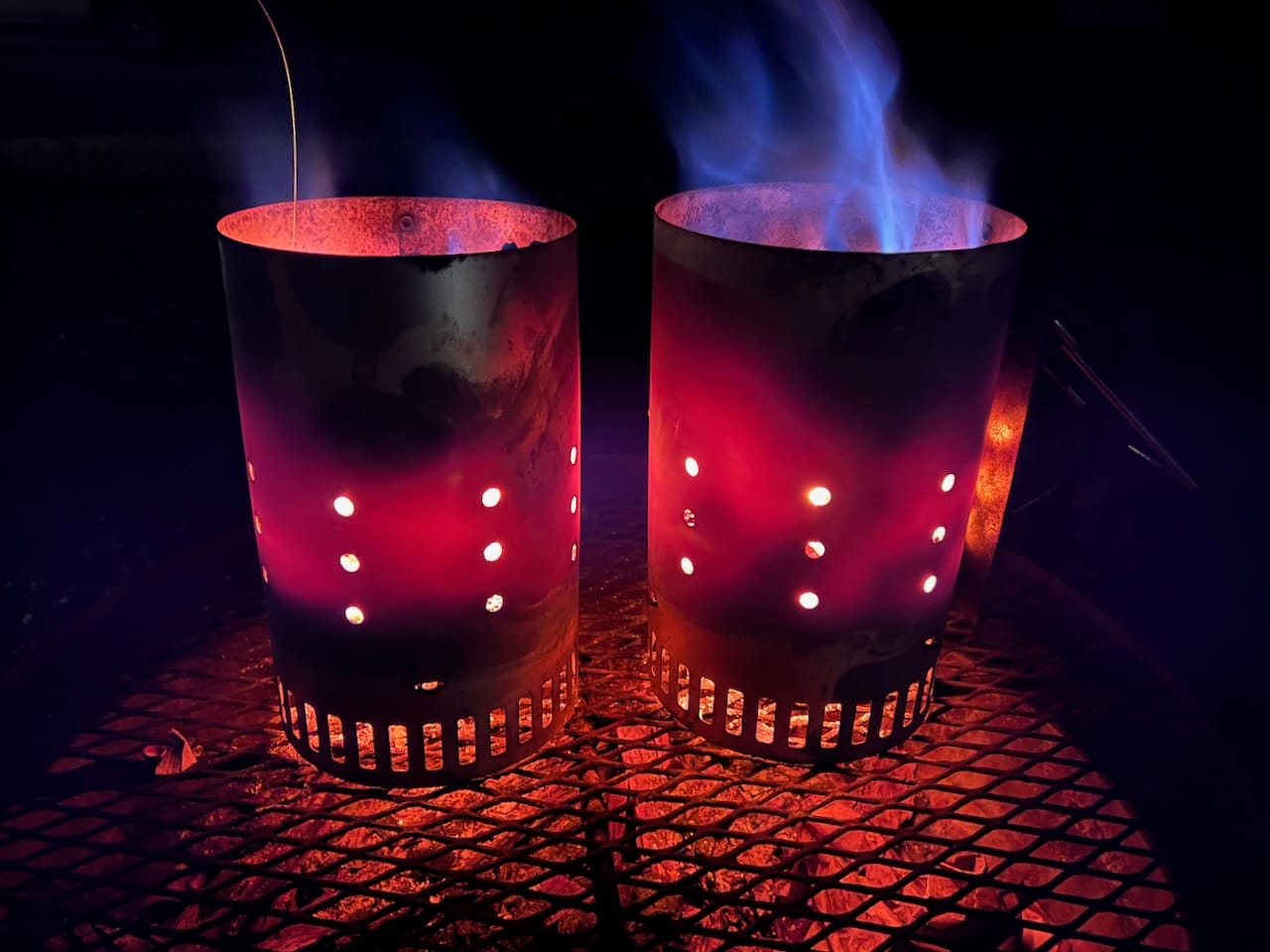
I have found the best way to start a fire in the Mill Scale 94 smoker is with two Weber charcoal chimneys full of blazing hot coals. The Mill Scale 94 is large, and having two charcoal chimneys of hot coals to start with will get you up to temp much quicker. Plus, it will help dry out any wet wood you may have from the rain.
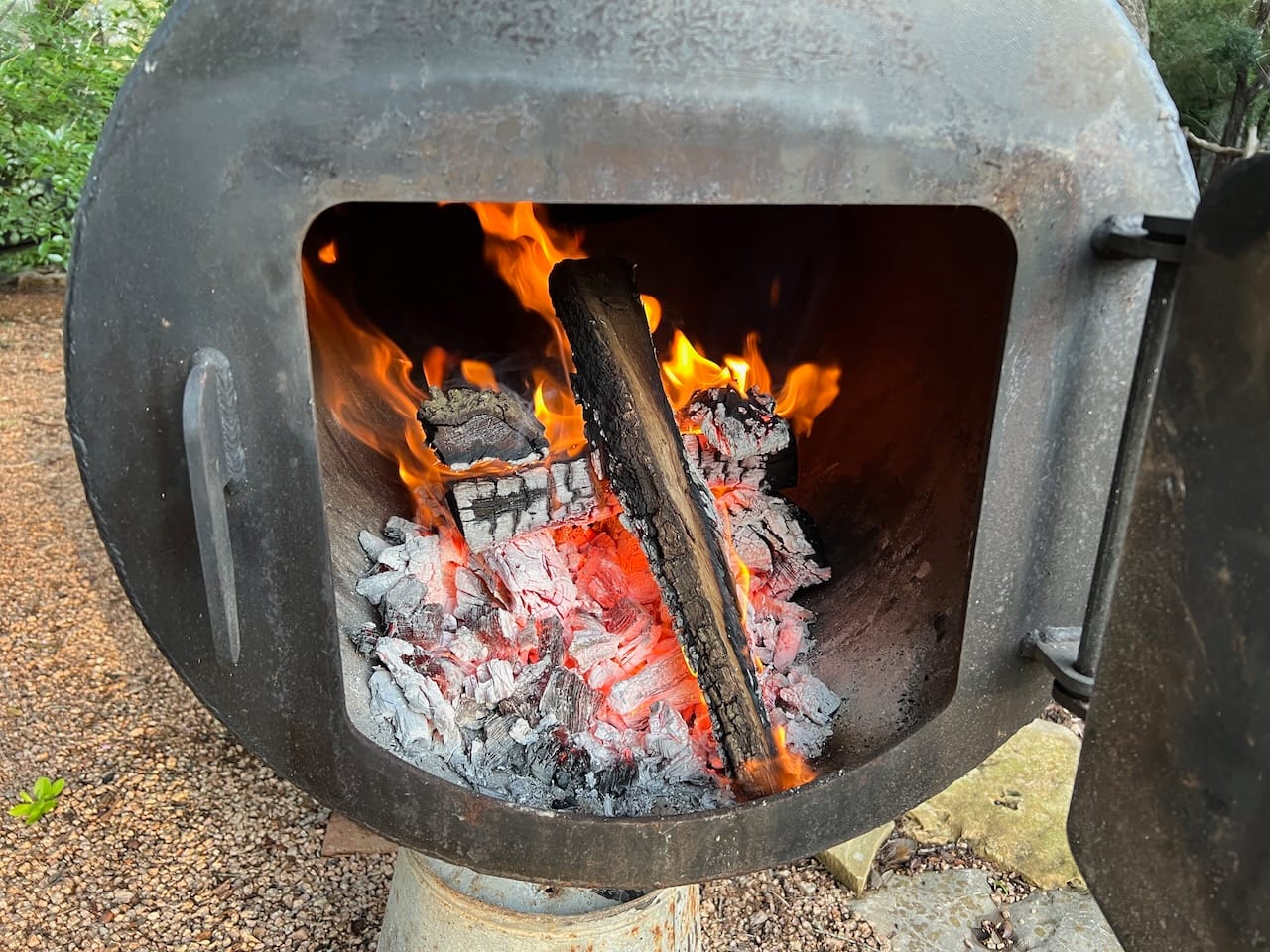
Once you establish the fire on your Mill Scale 94 smoker, you can start breaking down the newly added wood split to build your coal bed. Having a hot, established coal bed is important for quickly igniting new splits to maintain a clean fire. The goal is to always keep a flame burning, so you produce the best barbecue possible.
Preheating Wood Splits on Firebox
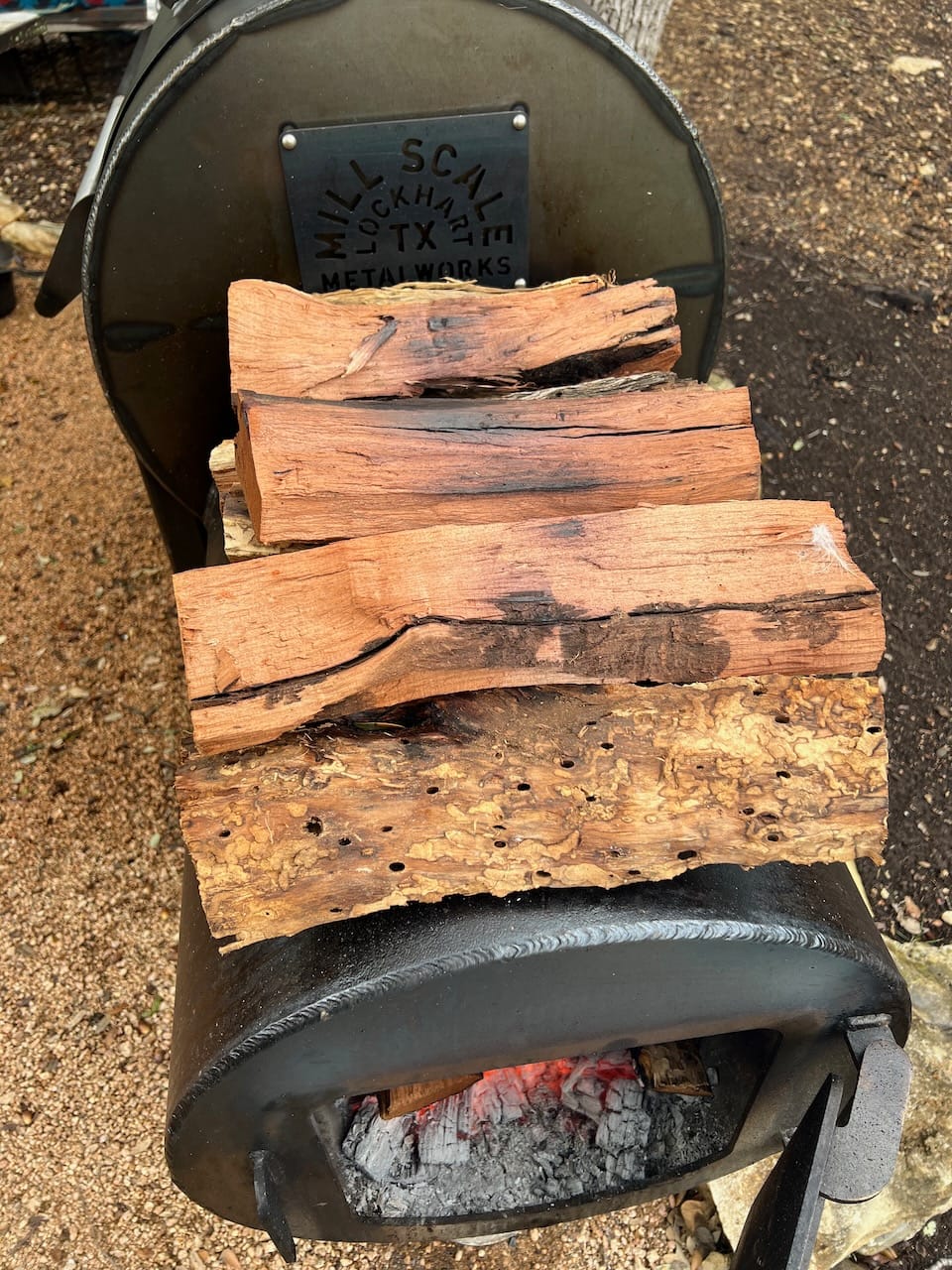
Preheating your wood splits before throwing them into the firebox will speed up the time it takes for them to fully ignite. There is nothing worse than throwing a new split inside the firebox and watching it smolder for twenty minutes. The top of the firebox is running around 500F, and it will heat the wood splits to the point they are too hot to pick up. As illustrated by the photo above, there are burn marks on the wood.
How Easy is the Firebox to Clean?
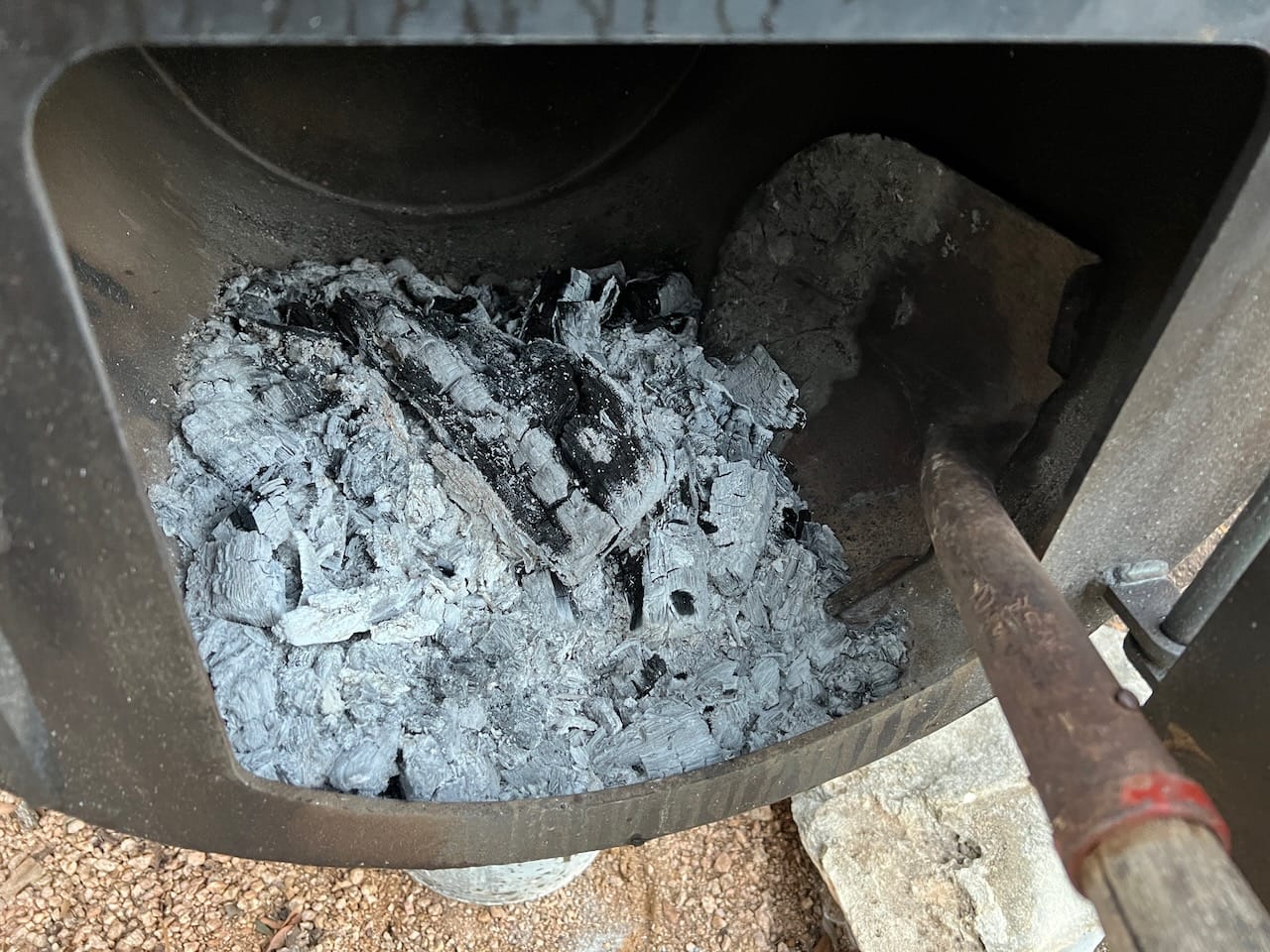
The firebox is easy to clean with a standard spade shovel. Because there is nothing interfering inside the firebox, scooping out ashes is simple with the curved head of a spade shovel. I wanted a firebox with a lip so ashes and hot coals don’t fall out during the cook.
This lip has not made it difficult to clean at all. No, you can’t sweep straight out, but scooping the ashes from side to side only takes a few minutes. There are no additional fire grates or ash pans to burn out or remove during clean up. Keeping your firebox clean by removing all the ash will prolong the life of the metal, especially during the rainy seasons.
Seasoning the Mill Scale 94 Offset Smoker
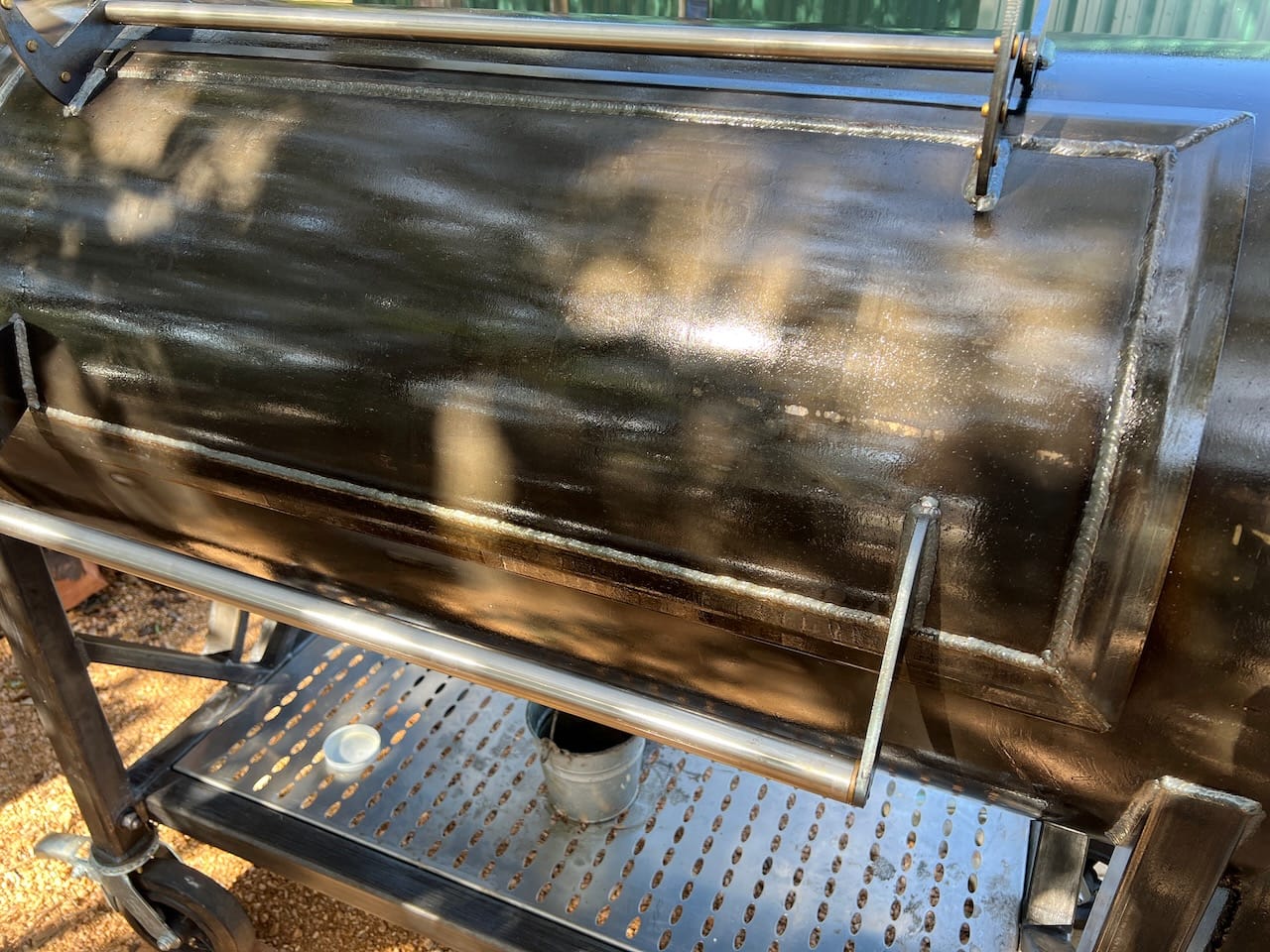
I purchased the oiled raw metal version of the Mill Scale 94 smoker, which will start to rust over time if you don’t preserve the metal. My smoker sits outside uncovered in the weather 24/7 because I would rather not buy a cover and deal with heaving to install it after every cook.
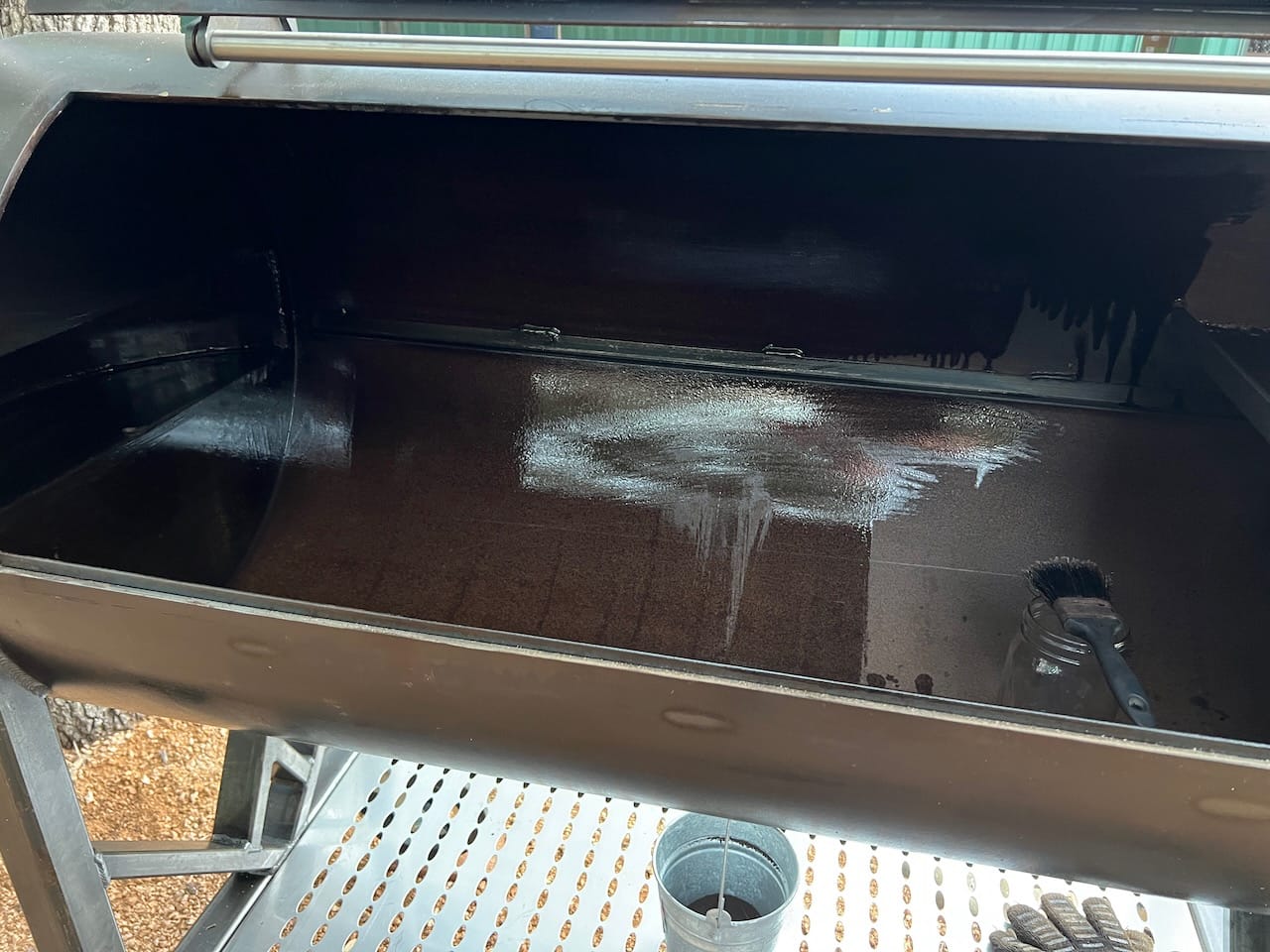
To preserve my smoker, I purchase tallow or melt down brisket fat and wipe or brush it on my smoker during cooks. The cook chamber doesn’t get near as hot as the firebox, so it won’t burn off as fast. It’s best to apply tallow to the firebox at the end of the cook as it’s cooling down.
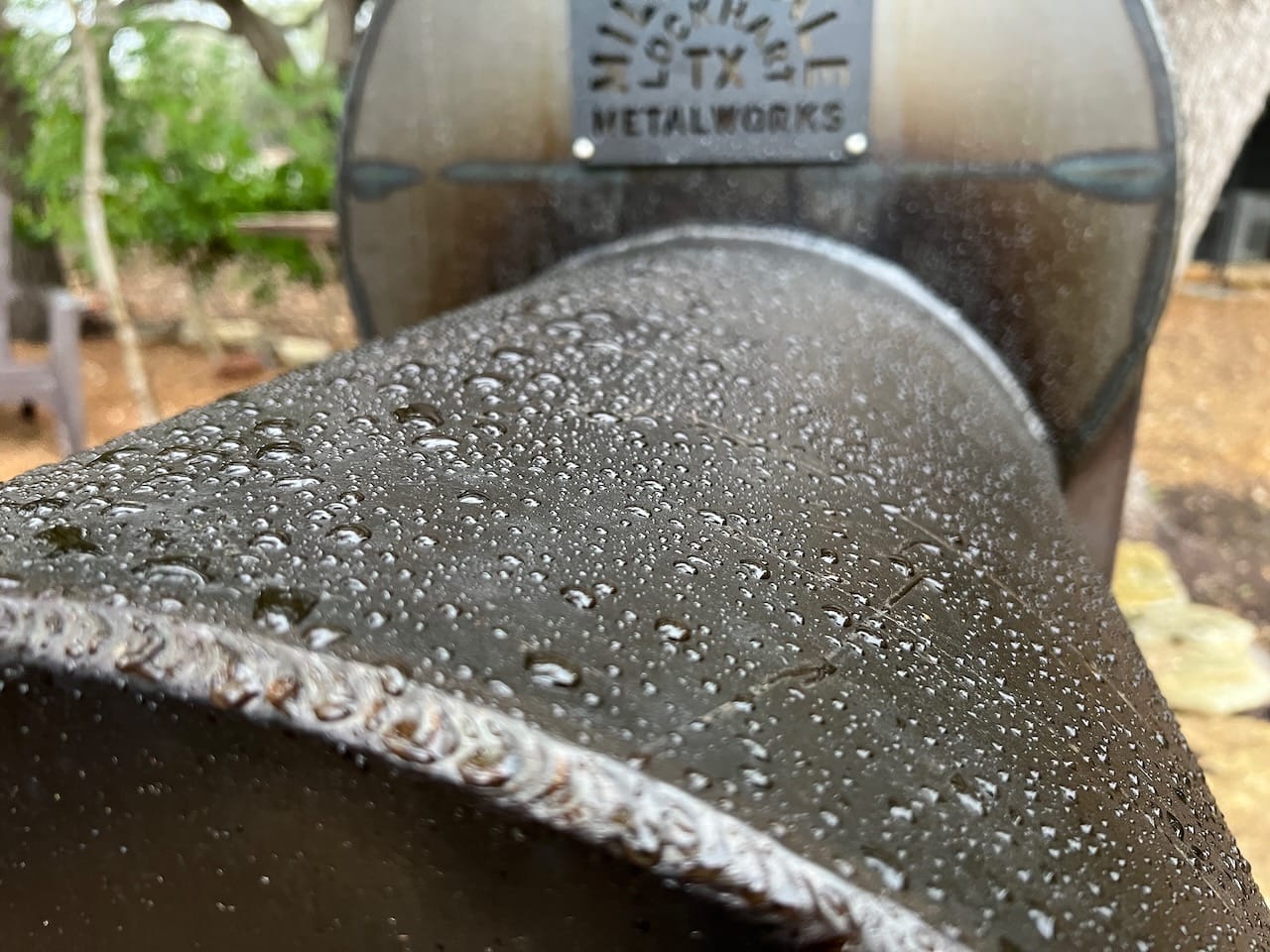
With applications of beef tallow to the raw metal on the offset smoker, the water beads up nice after a hard rain. Tallow has a waxy feel that is great at preserving metal naturally and is good to use around a cooker with food on it. There are many videos online showing people using linseed oil, but I felt more comfortable using something natural like beef fate, even if I have to apply it more frequently. What else are you going to do for 12 hours while smoking a brisket?
Cooking Meat on the Mill Scale 94 Offset Smoker
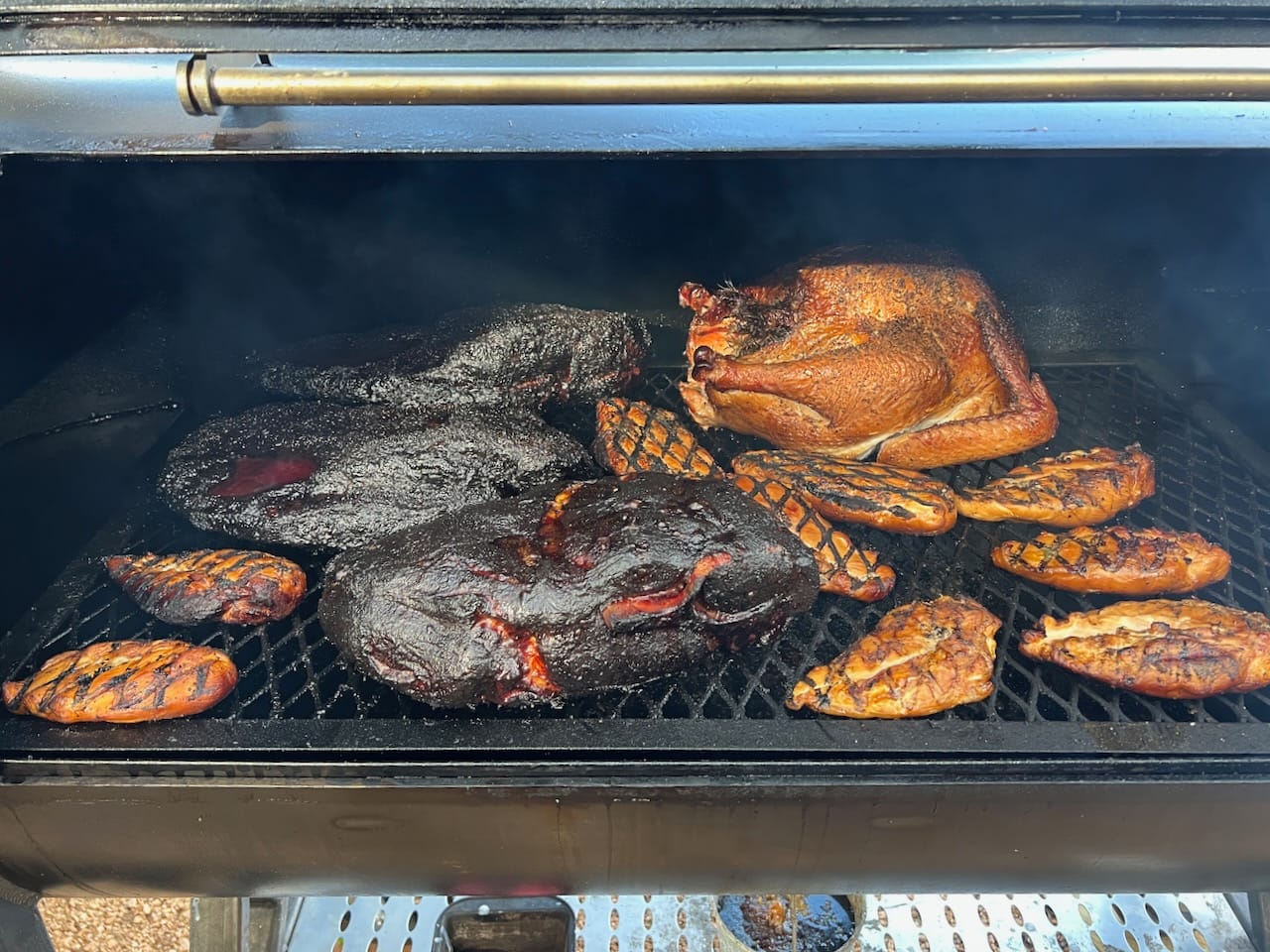
We have cooked all types of meat on our Mill Scale 94 smoker, including beef jerky and chocolate chip cookies. There is plenty of room in the pit for our needs, and cooking smaller hot and fast items like burgers and chicken works great on the right side near the fire. The smoke flavor from burning real wood is hard to beat on a homemade cheeseburger or chicken sandwich.
Brisket on the Mill Scale 94
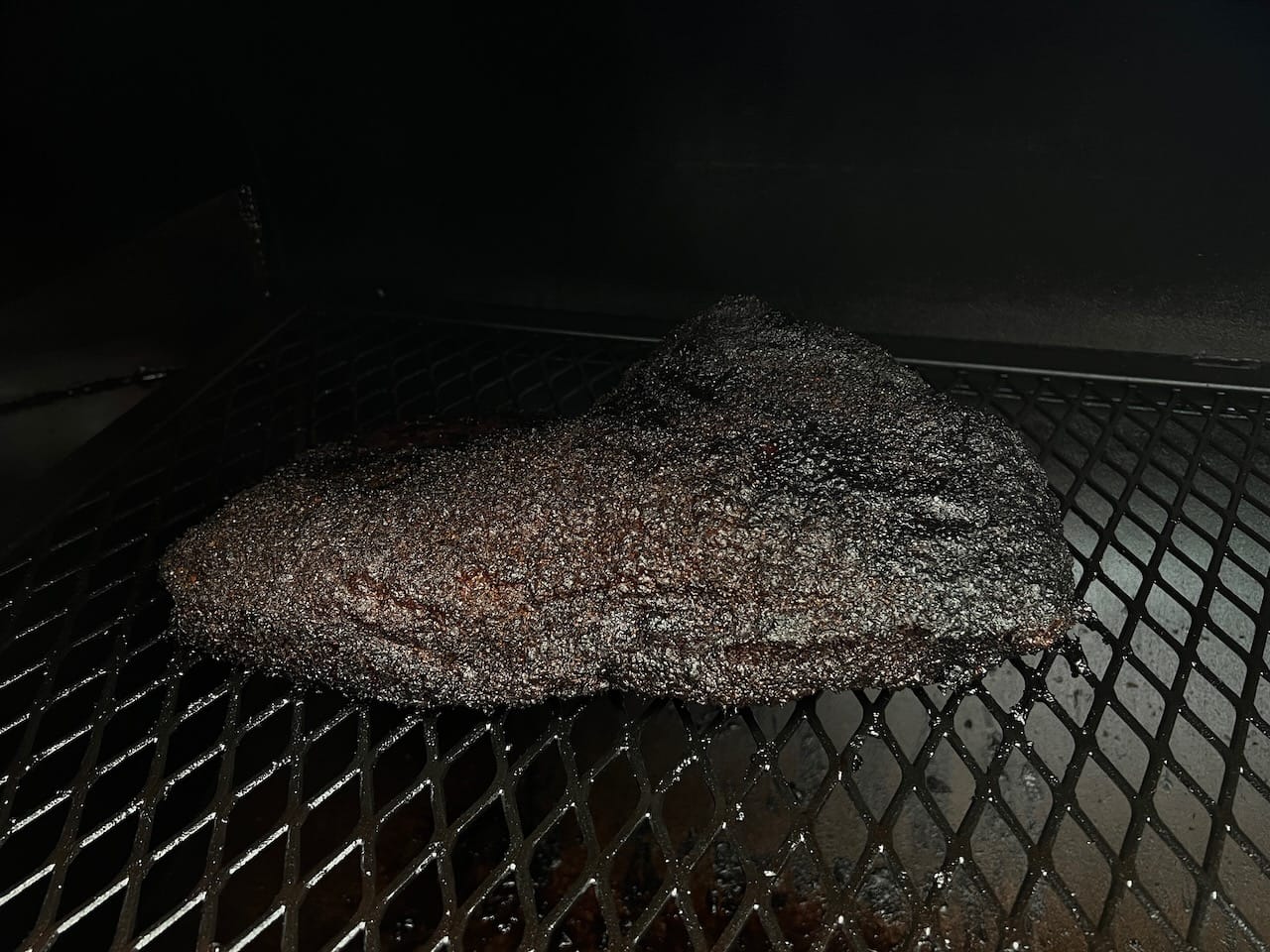
Brisket is king in Texas, and I doubt that is going to change anytime soon. I have smoked most of my briskets unwrapped throughout the whole cook, except for foil boating a few to capture juices. Normal render times have been anywhere from 12 to 14 hours, smoking anywhere from 250F – 300F for a 12-15 LB brisket.
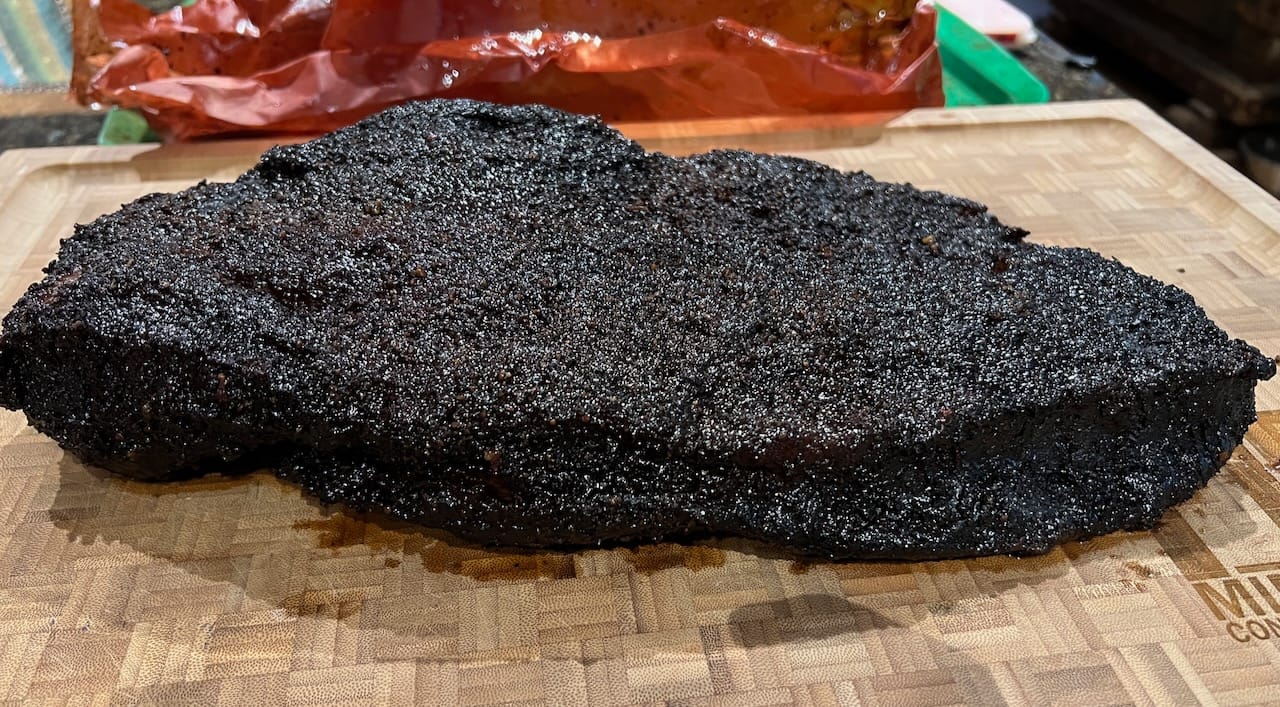
Central Texas black bark brisket can be achieved by putting in the time working the fire and feeding wood splits every 20-30min. The absolute best results are achieved by smoking meats under a constant wood burning flame, which layers flavor on the meat during the process. Yes, it’s tiring and not for everyone, but the result is what people wait hours in line for.
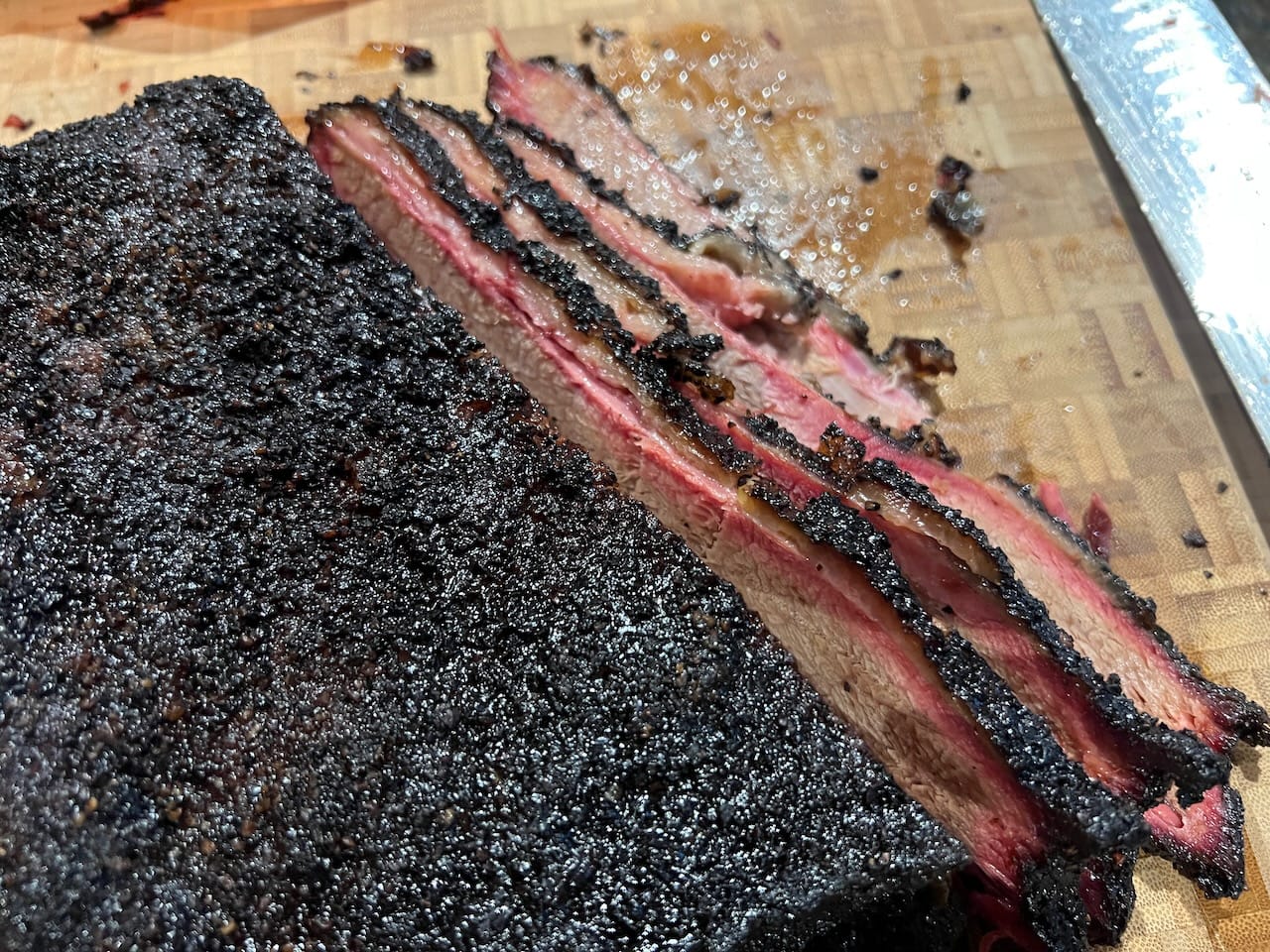
The smoke ring always seems to be how barbecue is judged visually. Bringing your brisket up to temperature slowly will allow it to absorb more smoke in the beginning, giving you that desired result. The ultimate test, of course, is how it tastes the next day. Barbecue always tastes better to me the day after, probably because I haven’t been inhaling smoke all day long.
Baby Back Ribs on the Mill Scale 94
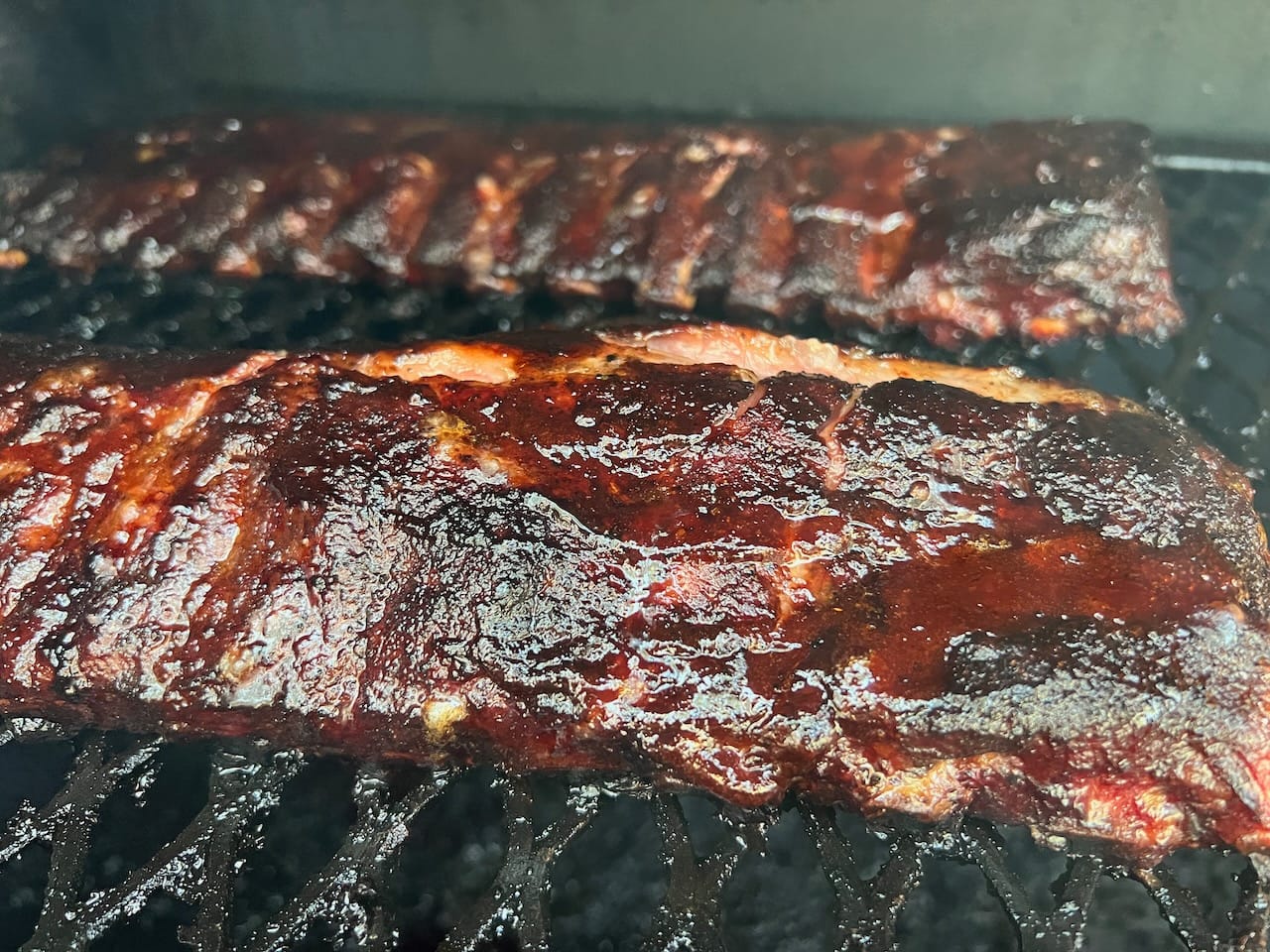
Baby back ribs are one of my favorite meats to smoke because they are simple to prepare and easy to cook. I usually run baby back ribs naked the whole cook because they can fully render due to their smaller size. The last thirty minutes of the cook are reserved for setting the sauce. Large ribs like St. Louis or full spare ribs typically need to be wrapped in foil to fully render the fat.
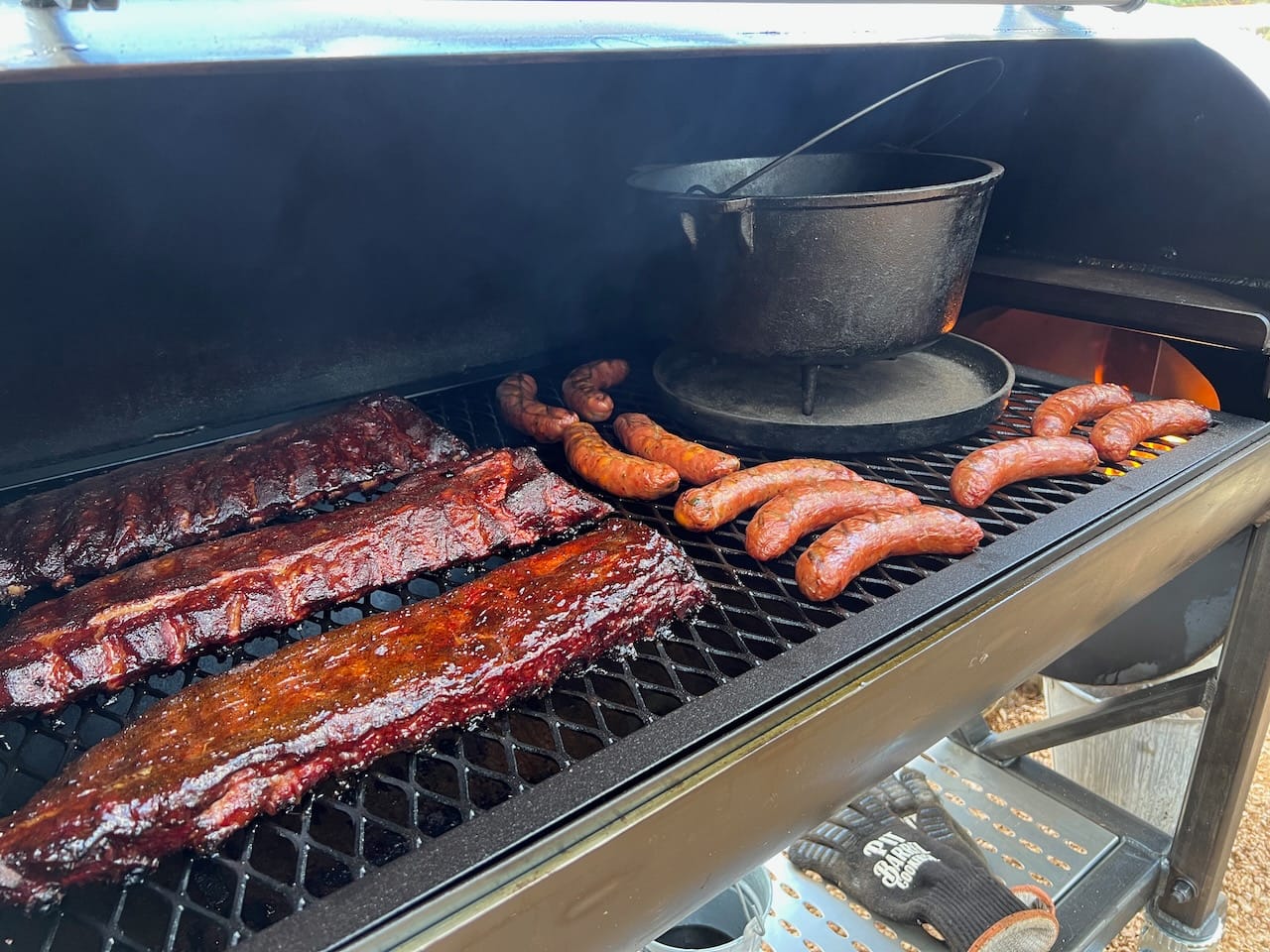
The Mill Scale 94 has plenty of room for a large cast iron pot of pinto beans. Leaving the top of the pot open allows the beans to pull in that sweet smoke flavor while the skin on the sausages is tightening up for that perfect snap.
Beef Jerky on the Mill Scale 94
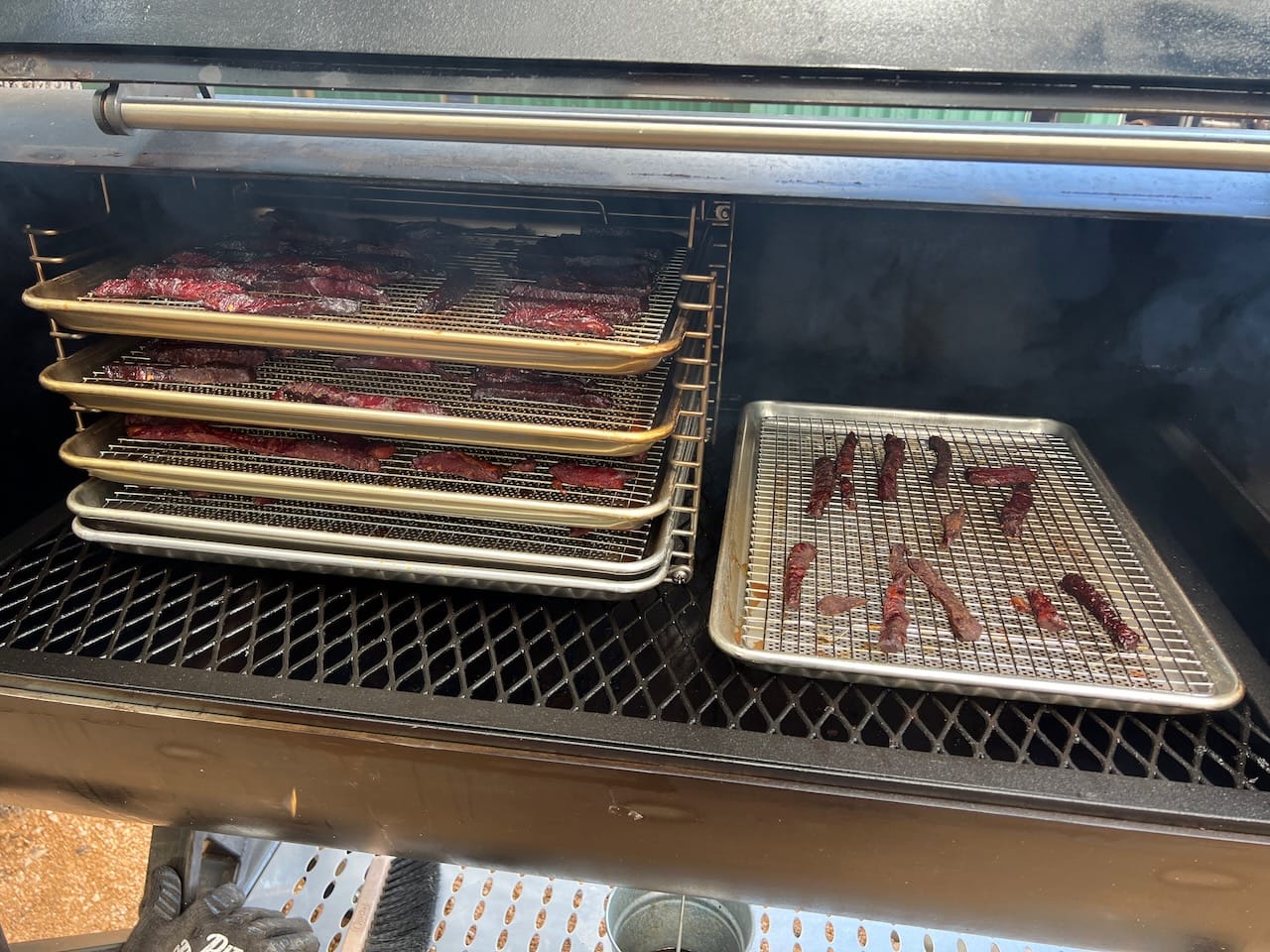
The height of the Mill Scale 94 smoker allows for the full-size Bull Rack to fit without any issues. The Bull Rack is a neat tray system that is great for smoking meats, cheeses, and veggies. Our Mill Scale 94 was running at 175F while maintaining a small fire to render out the beef jerky. The smoke flavor was unmatched by any other pit I own.
Chocolate Chip Cookies on the Mill Scale 94
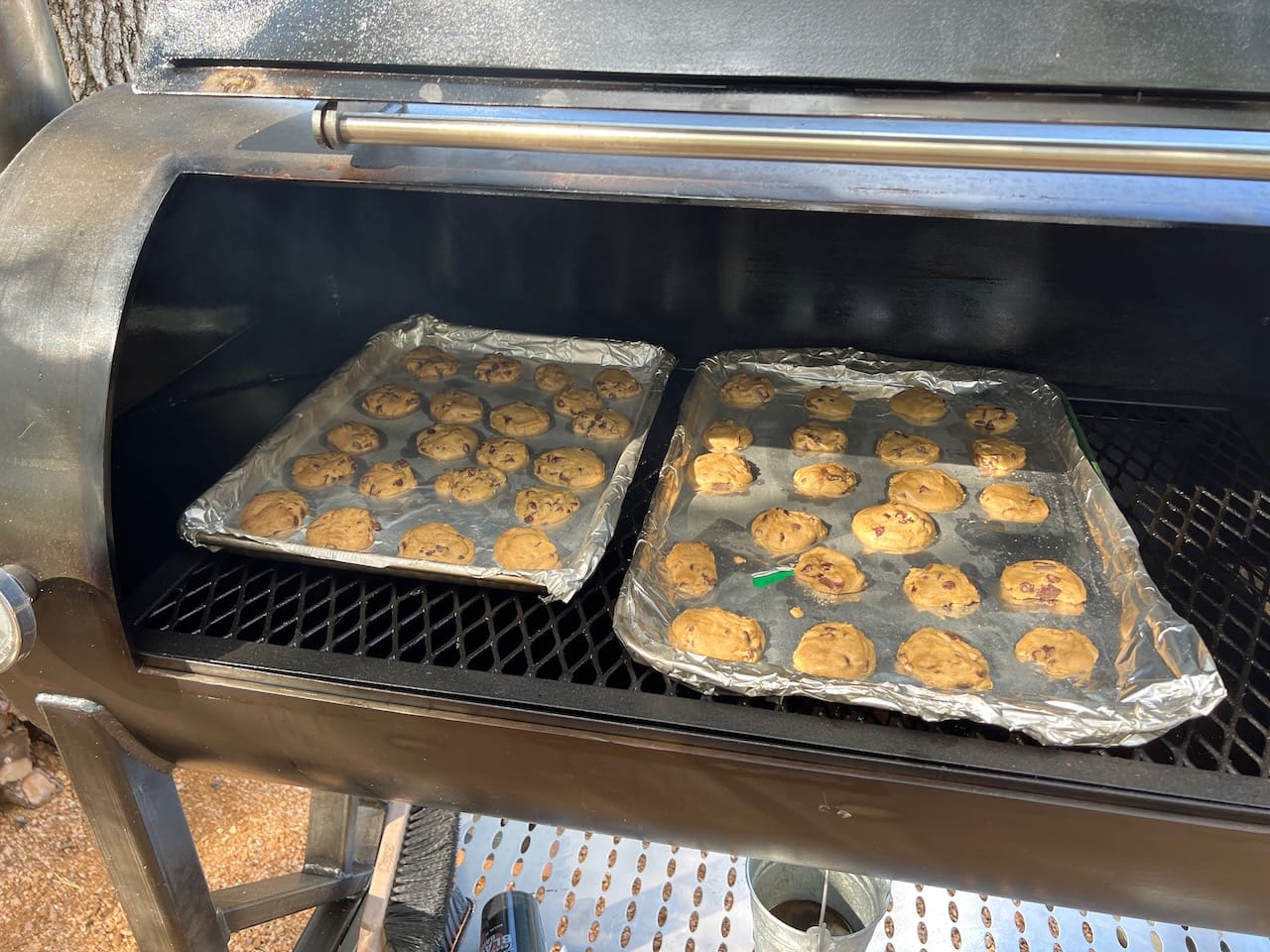
We first ate offset smoked chocolate chip cookies at Treaty Oak Distilling. The Mill Scale 94 is deep enough to accept a full-size cookie sheet, which works well if you choose to add some smoke to your deserts. We have smoked cookies and pecan pies with great success. It’s not for everyone, but it is a flavor we have come to love.
Steaks on Internal Water Shelf
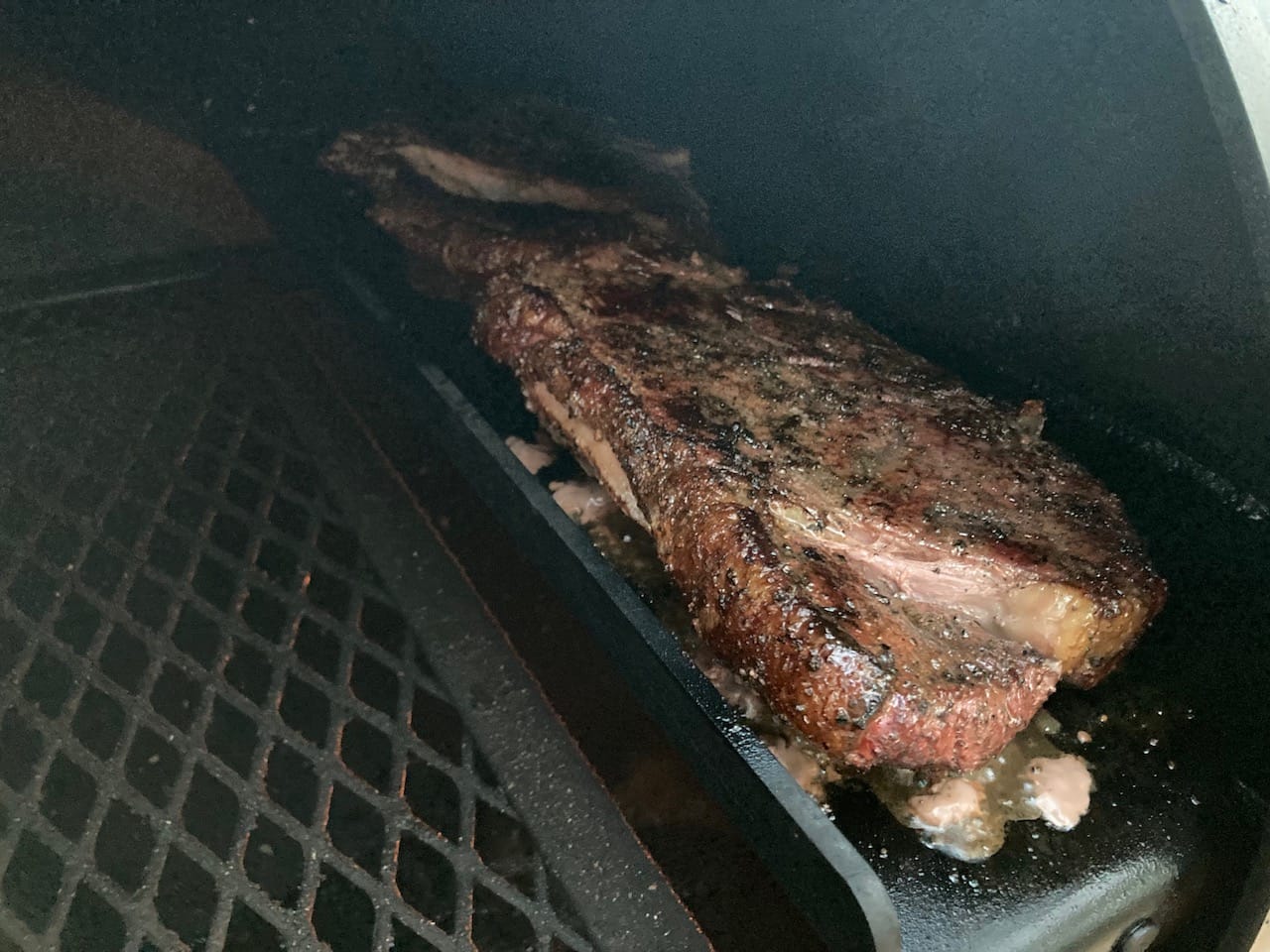
If you’re looking to add some smoke flavor to a steak, you can throw it on the water shelf inside the pit and let it go. The flat griddle like shelf gets 400-500F and works great for searing smaller meats while smoking larger cuts on the expanded metal grate.
Other Offset Smokers I Considered
- Moberg Smokers
- Lone Star Grillz
- Franklin Pit
- Blue Collar Products
- FatStack Smokers
- Smoke North (Canada)
- Meadow Creek Smokers
- Workhorse Pits
- Shirley Fabrication
I considered many brands when looking for a new offset smoker, but ultimately, I wanted to buy something from Texas. There are many great options out there from pit builders all over the United States making outstanding products.
Find someone local in your area to purchase a new smoker from if you decide to support your local economy. If you would rather have a Mill Scale, they can ship their smokers all over the world. Whatever you do, don’t buy a cheap offset smoker.
Is the Mill Scale 94 a Custom Offset Smoker?
I would say yes and no to this question. The Mill Scale 94 smoker is a hand built barbecue smoker that usually has a wait list. Mill Scale focused on “intentional design” and applied everything they learned from building offset smokers for some of the most famous barbecue joints in Texas.
They set out to create a simple yet sturdy smoker that maintained consistent temperatures and was enjoyable to use. As far as I know, you are limited to only the options available on their website. They may offer custom name plates for the side of the cook chamber, but that is something you will need to discuss with them when placing your order.
Mill Scale 94: The Best High-end Offset Smoker?
The best is a relative term, and it has been overused on the internet to a point it no longer has much meaning. There are many smokers on the market that can produce great barbecue. You need to choose the design and style that works best for your cooking style and is aesthetically pleasing to you.
I picked the Mill Scale 94 because I have personally eaten at many of the barbecue joints in central Texas that user their smokers. It’s that last ten percent that separates the best smokehouses in Texas from the rest of the world, and it can only be achieved by burning real wood in a standard offset smoker. It is the pinnacle of barbecue.
Because so many of these top barbecue joints use standard flow offset smokers, that is what I wanted. A simple, no frill's smoker with a simple round design to cook barbecue. I would say there are many offset smokers on the market that create excellent barbecue.
Mill Scale as a company is not really about fluff. If you have ever watched their videos or signed up to their email newsletter, you will notice they offer robust products with unique designs that get the job done. It’s easy for someone to say a certain product is expensive when comparing it to cheap imports that were manufactured overseas.
Out of all the offset smokers I looked at, Mill Scale’s pricing came in around the middle to upper end for high-end backyard offset smokers. They have built a legendary reputation in a short amount of time making barbecue smokers for world-class joints in central Texas and other parts of the world.
The simplicity of their design draws you to focus on the most important part of cooking with an offset smoker… fire management. Less fiddling with gadgets and features leaves you wide open to render perfect black bark briskets under a constantly burning mesquite or oak wood flame. The result is nothing short of magical.
For me, the Mill Scale 94 was the best high-end offset smoker.
Conclusion
At the end of the day, you need to buy what’s right for you and your cooking style. Offset smokers are not the easiest way to smoke meat, but they will produce the absolute best results once you master the process. I get a sparkle in my eye every time I glance over to my barbecue area to sneak a peek at the Mill Scale 94.
With the rising costs of shipping, finding something local will probably have an influence on what you purchase. Either way, there are more options on the market today than ever. No matter where you’re located, you most likely have a pit builder close by.

